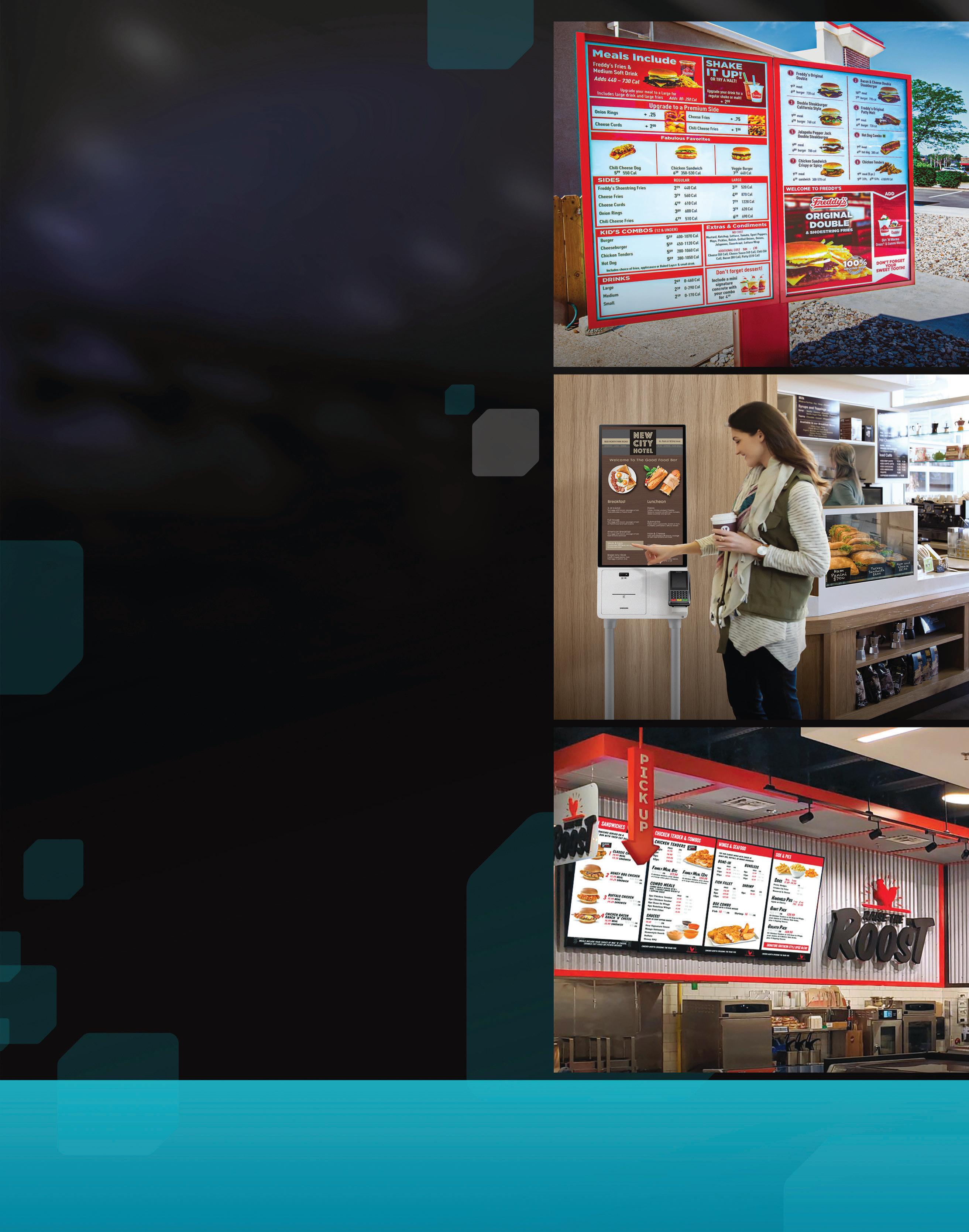











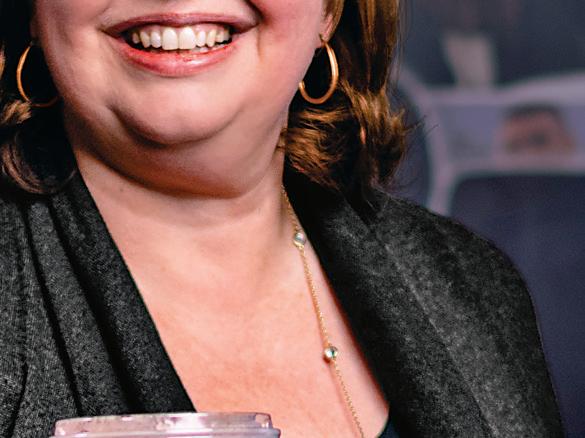































































































































We have opportunities in select, prime markets and non-traditional venues for qualified restaurant operators and developers with varied incentives for development.*
• Widely recognized and loved brand in family dining where guests feel welcomed and can enjoy classic favorites and craveable menu innovations any time of day
• A powerhouse brand that is a part of Dine Brands Global, a publicly traded company and one of the largest restaurant groups in the U.S.
• A dynamic brand that aims to deliver on popularity, relevancy, adaptability, and support

• An established franchise system with a business model and flexible design from conversions to freestanding, endcap, in-line and non-traditional—adaptable across varied venues










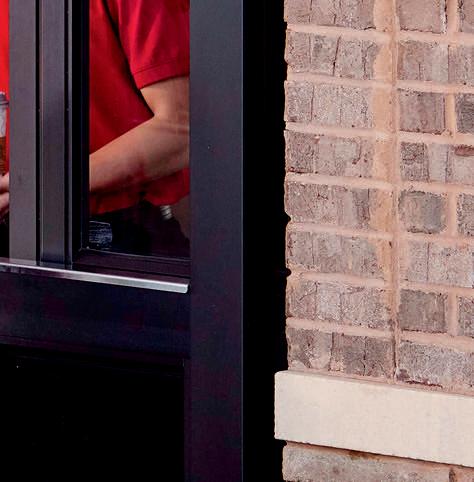








































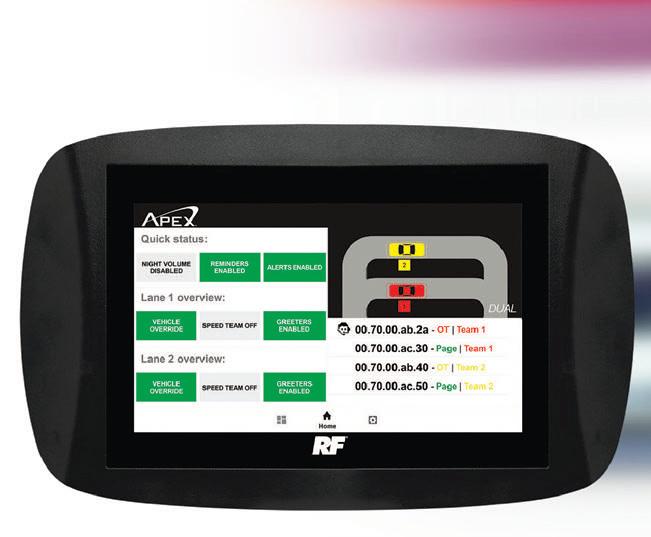















As restaurants automate to fi nd cost and labor savings, cash management is often






SPONSORED BY LOOMIS

Naftolowitz enaftolowitz@wtwhmedia.com






Mitch Avery mavery@wtwhmedia.com
PUBLISHER Greg Sanders gsanders@wtwhmedia.com
NATIONAL SALES DIRECTOR Eugene Drezner edrezner@wtwhmedia.com 919-945-0705
NATIONAL SALES MANAGER Edward Richards erichards@wtwhmedia.com 919-945-0714
NATIONAL SALES MANAGER Amber Dobsovic adobsovic@wtwhmedia.com 919-945-0712
NATIONAL SALES MANAGER John Krueger jkrueger@wtwhmedia.com 919-945-0728
SALES SUPPORT AND DIRECTORY SALES Tracy Doubts tdoubts@wtwhmedia.com 919-945-0704





F O U N D E R Webb C. Howell
A D M I N I S T R AT I O N 919-945-0704 / www.qsrmagazine.com/subscribe
QSR is provided without charge upon request to individuals residing in the U.S. who meet subscription criteria as set forth by the publisher.

R E P R I N T S
The YGS Group 800-290-5460 FAX: 717-825-2150 qsrmagazine@theygsgroup.com www.qsrmagazine.com/reprints
Sponsored content in this magazine is provided to the represented company for a fee. Such content is written to be informational and non-promotional. Comments welcomed at sponsoredcontent@qsrmagazine.com.

WTWH MEDIA LLC RETAIL, HOSPITALITY, AND FOOD GROUP










































Ijoined QSR Magazine in January 2020 not knowing much about restaurant operations.
I was naive about same-store sales, barbell menu strategies, EBITDA, and the like. The learning curve was steep. And that was before March when the entire industry changed forever.
The past three years have been one entirely teachable moment for my editorial colleagues and me. Not only did we report on an unprecedented global pandemic (and still are to an extent), but we were privileged to tell stories of how so many restaurateurs fought their way through restrictions, delays, and a changing consumer base. Drinking from a firehouse, baptism by fire, between a rock and a hard place— we’ve heard all the euphemisms from executives in recent years.
Being part of the restaurant world for only a couple of months, it was an opportunity for me to gain a first impression. I was left marveling at operators’ ability to adjust against an obstacle so unfamiliar and widespread. Last year was my first visit to the annual National Restaurant Association Show, which had been canceled the previous two years due to COVID. Chicago’s McCormick Center was full of buzz and excitement around people being together again. To say it was fascinating and captivating would be an understatement. The show is truly a maze of innovation, and I look forward to an even bigger spark this year.
I now find myself in the position of QSR editor, with greater control over telling the best stories this beautiful industry has to offer. As I look back on where I came from, no topic seems more fitting than growth and develop-
ment. That may seem odd, considering the word “recession” has been used countless times by economists and government officials in the past year. But we’re talking about restaurants here. Drive-thru, digital, and delivery—they always seem to find a way forward.
With that said, it’s quite appropriate that Dutch Bros (page 30) takes centerstage as our cover feature for the May issue. Cold beverages are the brand’s main sales driver, but metaphorically speaking, the chain is hotter than ever. The company finished 2022 with 671 shops, and it expects to eclipse 800 units this year, making good on a promise to do so back in 2018. In terms of unit count, Dutch Bros is the third-largest beverage chain in the U.S., following Starbucks and Dunkin’; $1 billion in annual sales and 1,000 units are well within reach, recession be damned.
I’m also excited about what’s to come for my own team. My colleague Callie Evergreen assumed leadership of FSR Magazine, our sister publication. Sam Danley, who took the pulse of the quick-service pizza wars in this month’s issue (page 42), joined as our associate editor earlier this year. Last, but certainly not least, is our fearless leader Danny Klein, who is leaning heavily into his role as editorial director and organizing the bigger picture.
Brighter days are not ahead, they’re here. Witness it. Hear it. Heck, even smell it. The restaurant industry is alive and well.
Ben Coley, Editor
Restaurants proved resilient during COVID, and that’s not going to change now.









































The beverage chain is innovating and giving customers more options.

DUNKIN’ OFFERED A NEW WAY to enjoy its menu in late March with the debut of its Breakfast Tacos.

The Breakfast Tacos are made using a warm flour tortilla, scrambled eggs, melted sharp white cheddar cheese, fire-roasted corn, and a drizzle of tangy lime crema. For an extra flavor boost, customers can choose to add crispy crumbled bacon on top. Setting the tacos apart is the blend of spring-forward ingredients, with fire-roasted corn as the star. According to Dunkin’, the product is good for breakfast, a midday snack, or the evening.

The tacos are designed to be convenient for customers to eat on-the-go, served in a Dunkin’ taco holder.
“Our culinary team has expertly crafted these Breakfast Tacos with the vibrancy of spring in mind, delivering a taste sensation that can be enjoyed any time of the day, not just for breakfast,” says Jill McVicar Nelson, Dunkin’s chief marketing officer.
Dunkin’ made a splash with its Breakfast Tacos.In August 2022, the National Restaurant Association released a DEI survey report that took stock of how well employers were handling diversity in the workplace.










































What are the keys to closing this gender gap? Let’s ask some of the top female leaders in the restaurant industry.






In the restaurant world there’s never a dull moment, which means you rarely get a free moment. So when it comes to finding the perfect fry for your guests, we’ve helped make it a little easier. In fact, we’ve reorganized our entire portfolio with you in mind and simplified it, so you can quickly and intuitively navigate by category or style. And whether you have a specific guest need or operational need, you can easily find the perfect potatoes.
Your world is complicated—weˇre here to help simplifry it.
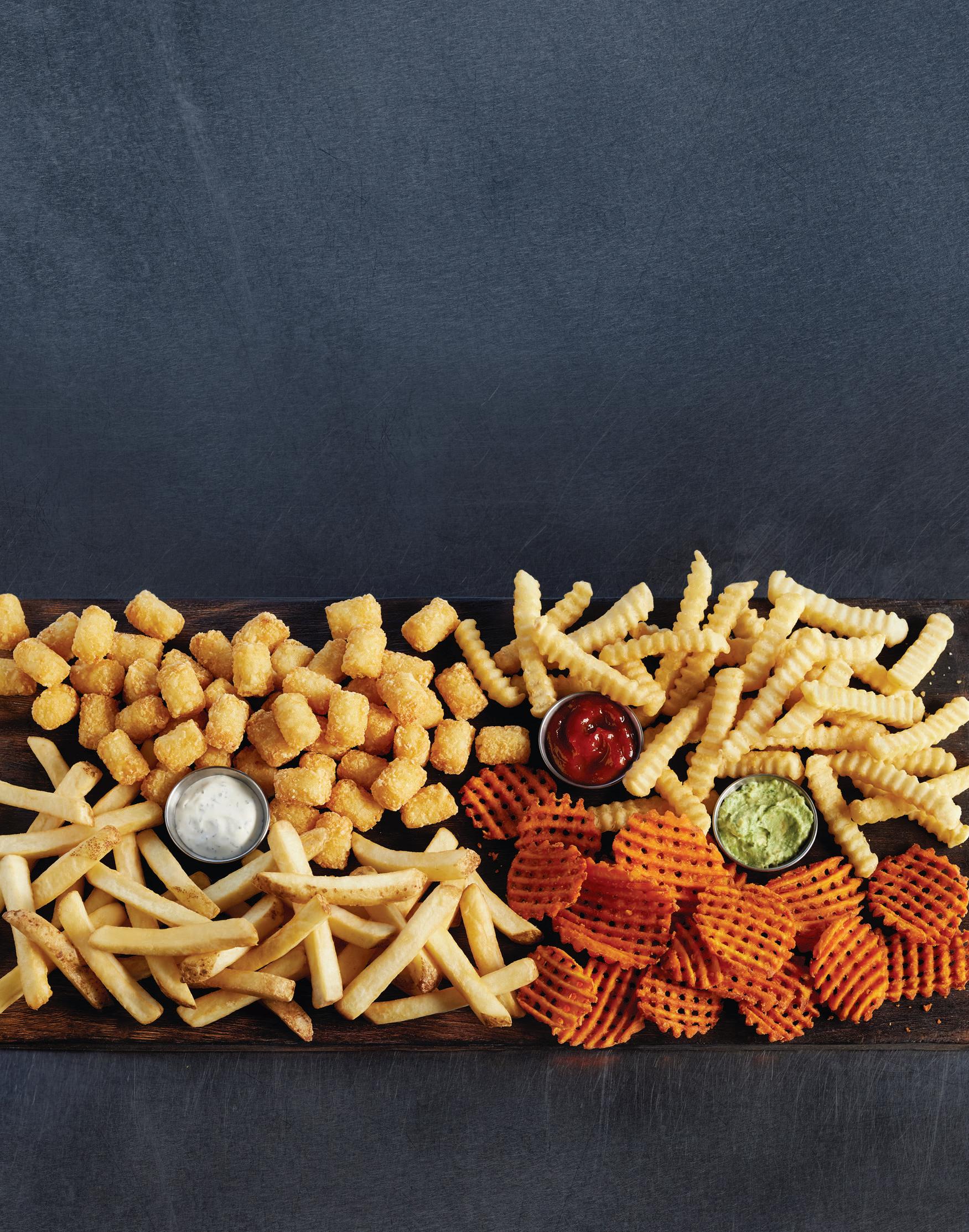
aren’t being met, and 42 percent of that group says they’ll leave if they aren’t being rewarded quickly. “Those numbers tell us that people are hungry for personalization,” Byrnes says. “They want their needs anticipated. They want rewards built on an understanding of their purchase behavior and menu preferences, and the big challenge is they expect this kind of loyalty o ering from the very first signup. They expect a reward before you’ve even had any time to collect a scrap of data on their purchase behavior or what they like o the menu.”
/ BY KARAIn the wake of COVID-19, quick-service restaurant customers have completely changed how they interact with their favorite brands. They want—and expect—loyalty programs to be an “Amazon-like experience,” says Tom Byrnes, senior vice president of marketing at PayiQ. Customers are looking for intensely personalized experiences, and brand executives aren’t always sure how to o er it to them.
PayiQ recently commissioned a survey on loyalty programs from the independent research firm Wakefield Research. The survey sheds light on just how much consumers love loyalty programs today, and, on the flip side, how challenging these programs are to grow.

A massive 91 percent of customers say a personalized loyalty experience is worthwhile, and 50 percent say they can’t live without it. At the same time, however, 69 percent say they’ll drop a program if their needs
The survey also reveals the challenges executives face when growing personalized loyalty programs. Of course, properly integrating systems into the back o ce is a major undertaking in itself, but as the results of the survey suggest, that’s when the going gets really tough. Forty-two percent of executives say they’re struggling to convey the value of their rewards to customers. “Customers now expect a lot of value up front, so that creates a conundrum. Loyalty programs today have to be able to convey that value immediately, or they run the risk—as we’ve seen—of near-term abandonment and attrition,” Byrnes says. “Customers have a desire to have a more personal relationship with the brand, and that hasn’t been lost on leadership. Because of this shift in the landscape, nine out of 10 executives surveyed now feel that losing loyalty members is inevitable if they can’t find a way to provide a more personalized experience. What’s more, 75 percent of these executives say that diners are leaving loyalty programs because they don’t feel valued.”
Even with a strong loyalty program laser-focused on customer preferences, there are still limits to what brands can do. Customers might only open their loyalty apps—and self-identify—to get points or redeem rewards on large orders. “You’re missing out on learning who your customers really are,” Byrnes says.
Payments Intelligence® by PayiQ allows restaurants to securely gather first-party data on every customer who pays at a restaurant with a card. “Payments Intelligence augments your current loyalty program to identify customer behavior patterns,” Byrnes says. “It gives you the ability to leverage data to reach your customers in the highly personalized ways they want to see, with the infrastructure you’ve already created, without requiring any extra e ort on the part of your employees or the customer.”
Customers love personalization, but it’s tough to manage at scale.
PHELPS
“Customers now expect a lot of value up front, so that creates a conundrum.”
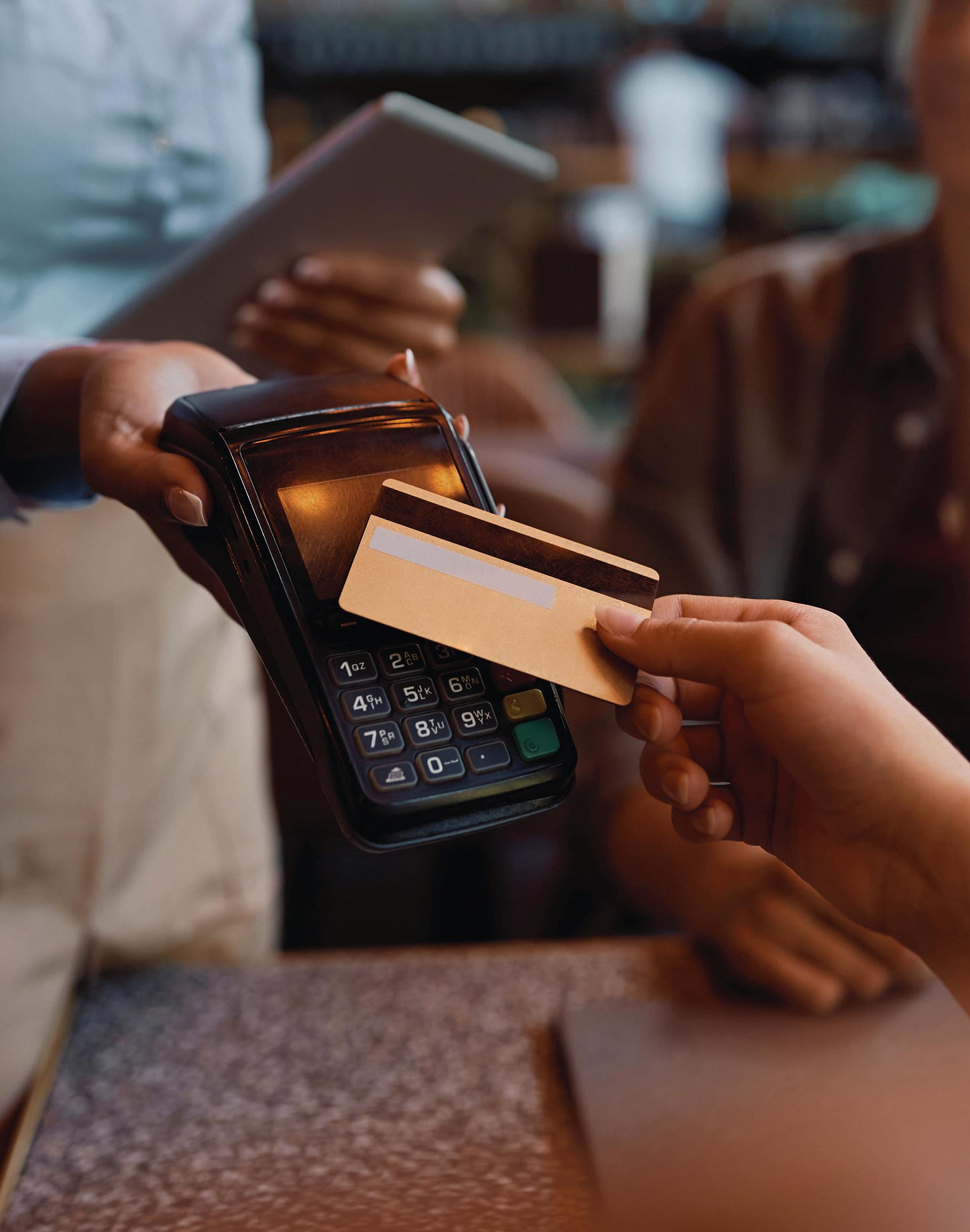
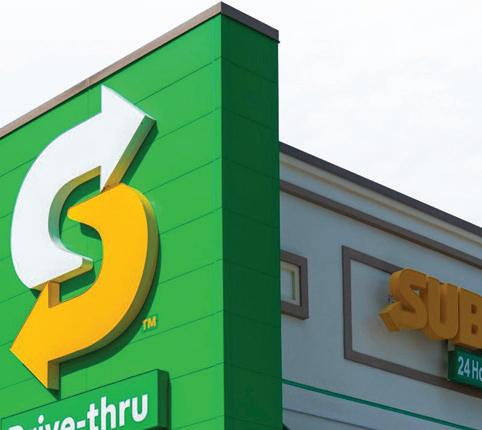




BUILD NEW OR ACQUIRE EXISTING LOCATIONS



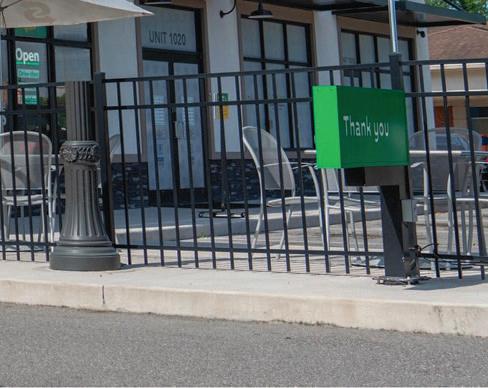
INVEST IN MODERN, FRESH FORWARD RESTAURANT DESIGNS
LEVERAGE MULTIPLE REVENUE STREAMS



ENGAGE WITH BRAND LEADERSHIP FOCUSED ON FRANCHISEE PROFITABILITY









12.5%
SAME SALES GROWTH

7.8% FULL SYSTEM


















Cookies are baking in more than just chocolate chips these days. The popular confections comprise America’s latest dessert-based store craze, joining past favorites like artisan ice cream, cupcakes that trended in the early 2000s, and frozen yogurt, which has been in expansion mode a couple of times.

Gourmet cookie operators have exploded onto the scene, expanding both internally and through franchise deals that could add hundreds of new stores across the country. The burgeoning
competition has led some observers to say the “Cookie Wars” have begun.

That phrase took a more literal turn last year after fast-growing national chain Crumbl, based in Linton, Utah, filed lawsuits against two smaller Utah-based players, alleging copyright infringement. These actions eventually garnered the social media hashtag “#UtahCookieWars.”
Using a combat term seems a bit overdramatic for the humble
cookie, even if multiple chains are intent on growth.
“It depends on who is using the term and how it is being used,” says Chris Wyland, chief executive of Cookie Plug, based in Riverside, California. To him, the phrase is a quick way to describe the sudden creation of many fresh-baked cookie chains and the resulting frenemies.
Cookie Plug, which features a hip-hop vibe and cookies that are 4 inches in diameter and an inch high, has three dozen company and franchised units. “I don’t think anyone is going to confuse us with Crumbl,” which has more than 700 bakery stores nationwide, he says.

There are several reasons why cookie chains are increasingly taking center stage.
“These operations are attractive now as they can operate in a much smaller footprint, require less labor, have tight stock so management is easier, and can be more flexible with their hours,” explains Maeve Webster, president of Vermontbased foodservice consultant Menu Matters. Initial investments for these franchised units are relatively low.
Young consumers remain willing to spend on decadent items like big, gooey, rich cookies that offer the “full, immersive sensory experience” and can play with colors and textures, Webster notes. Plus, “cookies are nostalgic, but infinitely variable,” appealing to various customers.

That last point is basically echoed by almost everyone in the cookie business.
“I think that cookies are timeless,” says Sarah Wilson, chief executive of yet-another Utahbased cookie company, Chip Cookies, which launched in 2016 and has about a dozen units in several states. The cookie “is more American than pie. It is embedded in our communities and our diet.”
Jenn Johnston, Quick Service Division president of Great American Cookies’ parent FAT Brands, agrees, noting, “Almost everybody loves cookies to some degree, so it is a fun business model.”

Unlike newbies like Chip Cookies, Cookie Plug, and Crumbl, Great America Cookies is a veteran. The franchised gourmet cookie chain, which claims about 370 bakeries, launched in 1977 with its original chocolate chip cookie recipe.
In that time, the company has seen several dessert trends come and go. “Different concepts have their time,” Johnston says, and the recent growth in gourmet cookies accelerated due to post-pandemic consumer behavior. “People have been turning to indulgent treats,” adding this response extends beyond individuals to families and groups.
Great America Cookies focuses on all these factions, not only through its many scoop-and-bake cookie varieties, but also its popular—and high revenue—cookie cakes, which are “a point of celebration and sets us apart,” she adds. Additionally, the company is increasingly co-branding units with FAT Brands’ Marble






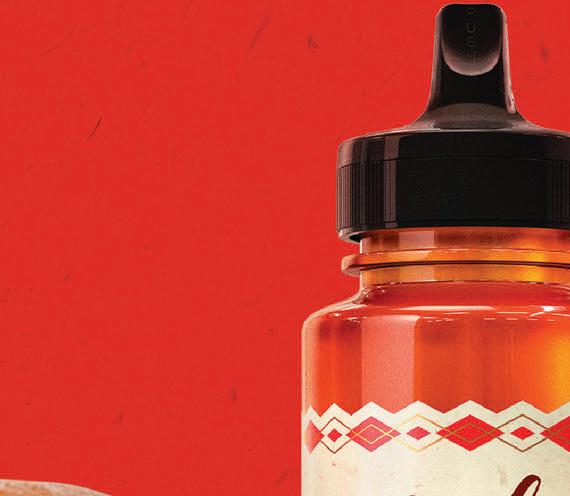




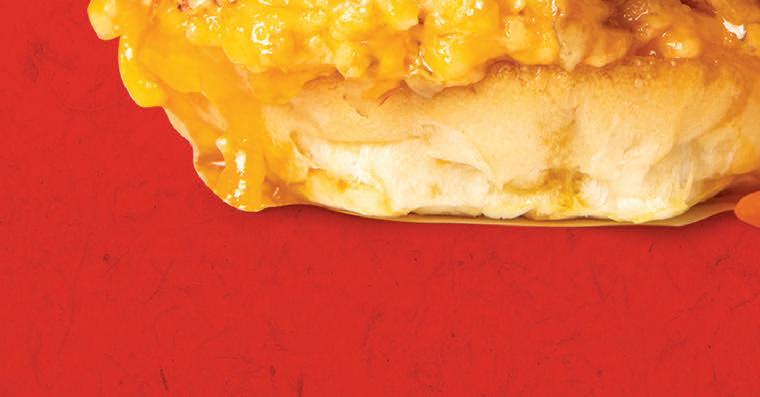


Slab Creamery, creating multi-option dessert outlets.
Chip Cookies is among the originators of the recent boom of fresh-baked gourmet cookies, born in Wilson’s off-hours cravings—while pregnant in Los Angeles—for a warm, hot chocolate chip cookie delivered to her home. The business began in 2016 as

a gourmet cookie delivery service and since has added physical stores.
When Wilson and her husband, Sean, launched the company, “we saw a gap in the market for a warm gourmet cookie,” she says. “When we started we thought our customers were going to be pregnant women,” but they quickly discovered it could be much more inclusive.

Chip has four standard big, hot cookies—the OG (original chocolate chip) and Biscoff Chip among them—plus hundreds of recipes for one more that rotate weekly, and all stand up well in delivery. Wilson states product quality is key to the company’s growth beyond its 11 original, company-owned units to new franchised stores in the 50-plus territories it has sold.

“You have one product, so it better be the best cookie,” she says. That extends to delivery, including experimenting with drone service. “We historically have done our own delivery,” she notes. “We find that with third party that last mile doesn’t always work out. Controlling the quality is important.”
Cookie Plug’s chocolate-chip cookie is also named OG, and that moniker—urban slang for something original— fits in nicely with the company’s hip-hop ambiance. The stores feature 15 daily thick cookies, including three keto, called “phatties”—another takeoff on urban lingo—with names like SnooperDoodle, a snickerdoodle referencing well-known rapper, Snoop Dogg.
An advantage of a concept like Cookie Plug, CEO Wyland says, is the relatively low cost to open and operate stores. Cookies are prepared off-site and baked in shops, requiring only a few employees daily to run each 800- to 1,000-square-foot unit. The average ticket is $23, as most customers buy several cookies to take away.
Cookie Plug has some 180 units in development and projects 50 openings this year, Wyland states. “It’s always great to sell deals, but we want to be strategic and open successfully.”
At this point, “There is room for multiple players, and room for everyone to play well,” he notes. Still, “You need to have a great product; you can’t just throw it out there.”
Eventually, a shakeout may come, according to analyst Webster.
“There’s always the danger of over-saturation of the marketplace when too many operations focus on only one category,” she explains. There’s also a danger that chains that grow too quickly “will result in variability, availability, etc.” that can damage a brand.
Smart operators will constantly look to create experiences that will tie consumers to the brand, including creating a social media presence, as Crumbl has done. “If it’s just a good cookie, that going to be less compelling,” Webster says, “because there are a lot of good cookies out there.”






ong after pandemic lockdowns, drive-thru and off-premises orders continue to take a larger slice of total sales—and restaurants are changing to accommodate their customers’ needs. Some brands are expanding and perfecting drive-thru lanes, while others are focusing on mobile orders via third parties and loyalty programs. Operators must figure out how to provide the same level of excellent service in these new configurations while managing the current ongoing fluctuations in labor.
To navigate the challenges of higher tra c through multiple order points, it’s more important than ever for restaurant teams to be able to communicate seamlessly with each other. “Restaurants are evolving in shape and size, which means communication needs are changing, too,” says Jason Bertellotti, president of HME Hospitality and Specialty Communications. “A total solution for restaurant communication enables operators to manage the significantly higher volumes more effectively at every touchpoint—mobile order and curbside pickup, walk-up windows, drive-thru lanes, front counter, dine-in service, and any additional service areas.”
Brands are also beginning to test the capabilities of artificial intelligence (ai) voice ordering systems. Amid sta ng fluctuations, voice
AI allows teams to increase operational e ciency and focus on other important duties while the system automatically takes customers’ orders and sends them to the POS to process. Crew members can be relocated to stations where personable, face-to-face interactions will have the greatest impact on customer service and satisfaction. “By integrating AI voice ordering solutions with your NEXEO | HDX platform, you provide an additional tool to help your team succeed,” Bertellotti says.
A comprehensive restaurant communications platform keeps crews connected to key areas of the operation, and it can integrate with other solutions like voice AI providers and timer systems. “A total solution is about providing critical information to key sta when it matters most,” Bertellotti says. “Whether you’re calling a crew member to clean up a spill in the dining area or delivering alerts from your timer to your headset, a total communication solution enables your team to increase e ciency and provide a greater customer experience.”


The NEXEO | HDX platform is one such solution. It delivers fully digital end-to-end audio, eliminating hum and noise even to voice AI systems. NEXEO | HDX’s Digital Audio enhances the drive-thru ordering experience, allowing the AI system to “hear” customers in high-definition audio—critical to ensuring order accuracy. Cloud connectivity also helps operators remotely manage and future-proof their entire store base. As their business and technology needs grow, NEXEO | HDX will grow with them, delivering advanced technology and functionality to support their ever-changing needs.


Other features of the NEXEO | HDX platform include tap-toconnect headset registration, unlimited headset pairing, color touchscreen display, system diagnostics, and integration with the HME ZOOM Nitro Timer, which audibly alerts team members when certain metrics need their attention. “NEXEO | HDX delivers critical information—from other systems and team members—to key employees when it matters most,” Bertellotti says. ◗

NEXEO takes communication beyond the drive-thru and into key areas of your restaurant, increases efficiency with voice commands and group conversations, and seamlessly supports voice AI ordering. And that’s just the beginning.


























FOUNDER: Derrick Hayes
HEADQUARTERS: Atlanta
YEAR STARTED: 2014


TOTAL UNITS: 4 restaurants in Atlanta, 3 kiosks in Mercedes-Benz Stadium, and a food truck
FRANCHISED UNITS: 0
ATLANTA ISN’T

when you think about cheesesteaks, but it’s where Derrick Hayes built a name for himself with his take on the classic sandwich.
The West Philadelphia native launched Big Dave’s Cheesesteaks in 2014. What started with a single location in a small gas station outside of Atlanta has expanded

into one of the region’s fastest-growing businesses. Its footprint now spans four stores across the city, along with a food truck and three units in Mercedes-Benz Stadium, home of the NFL’s Atlanta Falcons.
Hayes has become a rising star in the restaurant industry with his award-winning take on West Philly fare. In 2021 he was named to the Forbes Next 1,000 List. Last year, he graced the cover of Essence Magazine alongside his partner and fellow restaurateur Pinky Cole, founder of Atlantabased Slutty Vegan. Hayes has also been nationally recognized by Good Morning America, Black Enterprise, RevoltTV, People Magazine, Red Table Talk, and more.
Success hasn’t come easy. In fact, it almost didn’t come at all. Hayes ran into trouble with the law as a young adult. At one
point he faced a potential jail sentence for drug trafficking, but a stroke of luck helped him avoid spending time behind bars and gave him an unexpected second chance.
Hayes started Big Dave’s to honor his father, David Hayes, who he watched die from cancer in 2009. Before moving to Atlanta, he promised the patriarch that he’d turn his life around and start his own business. He made good on that pledge when he set up shop in a 750-square-foot gas station in the northern suburb of Dunwoody. It was there that he started serving up flavors from his hometown in the form of beef, chicken, and salmon cheesesteaks.
“I want people to know that they’re getting something authentic, because I’m from West Philly,” Hayes says. “The marriage between that authenticity and the special way I do things is what sets us apart.”
He points to the signature Dave’s Way sandwich as an example. It comes with onions, sweet peppers, banana peppers, and mushrooms, plus American cheese, provolone cheese, and Cheese Whiz, all served on a traditional Amoroso’s roll. That’s different from what you’ll find in Philadelphia, where the sandwiches come with just one type of cheese. Hayes also prides himself on Big Dave’s seasoning, which is now sold as a standalone product in-store and via the company’s website.
Beyond the flagship cheesesteaks, the menu includes hand-rolled egg rolls, wings, Philly fries smothered in cheesesteak fixings, and a selection of Philly-inspired salads and beverages.
Hayes says it didn’t take long for Big Dave’s to develop a loyal following. Still, those early days at the gas station weren’t a walk in the park. He was cash-strapped, learning how to run a restaurant in realtime, and dealing with faulty equipment. A passion for cooking and

THE FIRST CITY THAT COMES TO mind


Texas Pete ® is taking its flavor on the road with convenient, easyto-enjoy portion control packets! Whether it’s a Texas Pete ® dip cup or sauce packet, your customers will be able to enjoy bold flavor for a better on-the-go dining experience—anywhere, at any time. Ask your broker for the #1 portion control hot sauce and request a free sample today!








Ben & Jerry’s franchisee Primo Partners proves it’s more than just an ice cream shop.
North Carolina. From there, they have opened 14 more in metro areas such as Chicago, Tampa, and Houston. From the beginning, Primo Partners used its business to educate and develop young leaders. Its goal is to change Black business as we know it.
“We’ve always looked for ways to tackle difficult issues or have difficult conversations, and we really see ice cream as a vehicle for doing so,” McBroom says. “It’s something that brings people together.”
Through its Ben & Jerry’s platform, Primo Partners has established a growing internship and scholarship program. It donates 1 percent of its revenue back into the community, supporting Black entrepreneurship and marginalized communities. Additionally, it has commitments to foundations, such as Habitat for Humanity and United Way.
In addition, Primo Partners sets aside 2 percent of its revenue for staff development. Through the pandemic, the company poured resources into professional enhancement activities and coaching.
When Primo Partners—Ben & Jerry’s largest and only Black-owned multi-unit franchise group—began its growth path, it felt the need to choose between business and education, says Antonio McBroom, the company’s CEO.

“But we saw the genius of ‘and,’” McBroom says. “We saw that we could be business leaders and make major contributions educating people about business; our business could be our classroom.”
Consisting of long-time friends McBroom, Eric Taylor, and Phillip Scotton, the journey of Primo Partners is one of passion and mentorship. In addition to Ben & Jerry’s, the company also has development endeavors in real estate and just this year was awarded a Starbucks licensing agreement.
When McBroom had the opportunity to buy the Ben & Jerry’s shop he was working at during his senior year in college, he felt like it was the right time to take the entrepreneurial leap.

“As a brand, Ben & Jerry’s has always been a justice company. They use ice cream for their platform,” McBroom explains. “That allowed the company to connect with us at even deeper levels.”
The friends’ first Ben & Jerry’s location opened 15 years ago in
“Coaching is what we love to do. If you think about the original coaches or carriages from the early centuries, they got valuable assets from where they are to where they need to be,” McBroom explains. “We look at Primo as a coach to transfer these leaders from where they are to where they want to be.”
Furthermore, February 16 ushered in a new era for Primo Partners. The group opened its first Starbucks location at the University of South Carolina, and McBroom is eager about the partnership.
“We thought that this would be the ideal complement to the Primo brand as we become a multi-unit, multi-brand organization,” McBroom says. “I’m excited to grow within the Starbucks ecosystem and be a key partner across multiple markets in the Southeast.”
For McBroom, Starbucks felt like the right fit not just for its products but also for its justice-minded approach to equity. Since its inception, Starbucks has never shied away from taking stances, something McBroom looks for in an organization.
The Starbucks store at the University of South Carolina adds to Primo Partners’ portfolio of campus locations. The franchise group has Ben & Jerry’s locations at the University of North Carolina, the University of South Carolina, and the University of Georgia. While McBroom looks forward to expanding


 / BY KARA PHELPS
/ BY KARA PHELPS

Restaurant operators frequently underestimate the time and labor commitment they’re making to cash handling. From counting and recounting to depositing, reconciling, and delivering cash to the bank, it adds up quickly.





“Manual activities, such as the handling and depositing of cash receipts, distract restaurant managers from the core of their business, which is providing a great experience for customers and a positive working environment for their employees,” says Lenny Evansek, senior vice president of SafePoint business development at Loomis. “That’s why accepting cash payments is more important than ever. Cash is and will remain a strong method of payment within the quickservice restaurant industry as the needs and characteristics of its consumer can vary across many geographic areas and social metrics.”
Given ongoing challenges with labor and the supply chain, it may be time for restaurant operators to re-evaluate how they manage cash handling, Evansek says. Solutions put in place five–10 years ago may no longer serve the modern world as e ectively as operators need.
Manual cash counting, for example, leads to increased cash discrepancies, shortages, and errors—not to mention the increased security risk when cash is openly handled and vulnerable. The risk of internal theft rises, as cash can’t be tracked, and the location also becomes a target for external robbery or burglary, potentially putting customers and employees in harm’s way. Since employees also need to arrive early and stay late for manual cash handling tasks, labor costs increase, and supervisors must take time away from other revenue-generating responsibilities to oversee cash handling and visit the bank if needed.

“On-site store observations, comparing what is actually happening in the restaurant versus the standard operating procedure, can reveal many ine ciencies which can be corrected by implementing an automated and standard way of handling and depositing cash,” Evansek says.

When a restaurant adds new automation technology and begins a new cash handling process, training and providing resources for ongoing training of employees is essential, Evansek says. Operators should ensure there’s always a paper trial, which is easy for managers to maintain and view if their smart safe and cash recycling solutions come with a customer reporting portal. Finally, operators should assess their new cash handling process at 60-, 180-, and 360-day intervals, evaluating the compliance of the transition and making improvements as necessary.
In fact, a case study conducted by Loomis found that restaurants can save more than 30 hours per month in labor and another $50–$100 in bank depository and change order fees by automating cash management.
“Operators that choose an automated way to handle and deposit cash can count on time and money savings from eliminating or reducing bank trips, deposit prep, drawer reconciliation, and benefits within corporate treasury, accounting, and loss prevention,” Evansek says.
To learn more and download Loomis’s Ultimate Guide to Restaurant Cash Handling, visit loomis.us/restaurant-guide.
As restaurants automate to find cost and labor savings, cash management is often overlooked.
“Accepting cash payments is more important than ever.”


Cash handling can be a huge time and labor commitment – something restaurant operators don’t have enough of. SafePoint is comprised of smart safe technology, change order management, armored transportation, and our customer reporting platform, and is designed to make your in-store cash handling quick and easy. Leave it to the pros!


download the Ultimate guide for restaurant Cash Handling

Everything you need to know to increase e iciency, mitigate risk, and reduce costs associated with in-store cash handling.



Across 30 years, Dutch Bros has grown from a pushcart to the third-largest coffee chain in the U.S. It wouldn’t have gotten there without its not-so-secret weapon— building a people-first culture.

On September 15, 2021, Dutch Bros cofounder and executive chairman Trav Boersma stood center stage on the floor of the New York Stock Exchange, donning sunglasses and a “Rage Against the Machine” T-shirt—emblematic of his company’s rebellious beginnings. With a gavel in his right hand, Trav used his left to count down and prepare a chant. He and the team surrounding him shouted “DUTCH” while the crowd responded “BROS.” Shortly after, he reared back the gavel well above his head and smashed it against the sound block four times. He then lifted the gavel straight into the air and turned to both



sides, making sure everyone understood the gravity of the moment. Judging by the smiles, claps, yells, and cheers, it was clear they did.
Dutch Bros was now a public company, marking one of the chain’s greatest achievements.

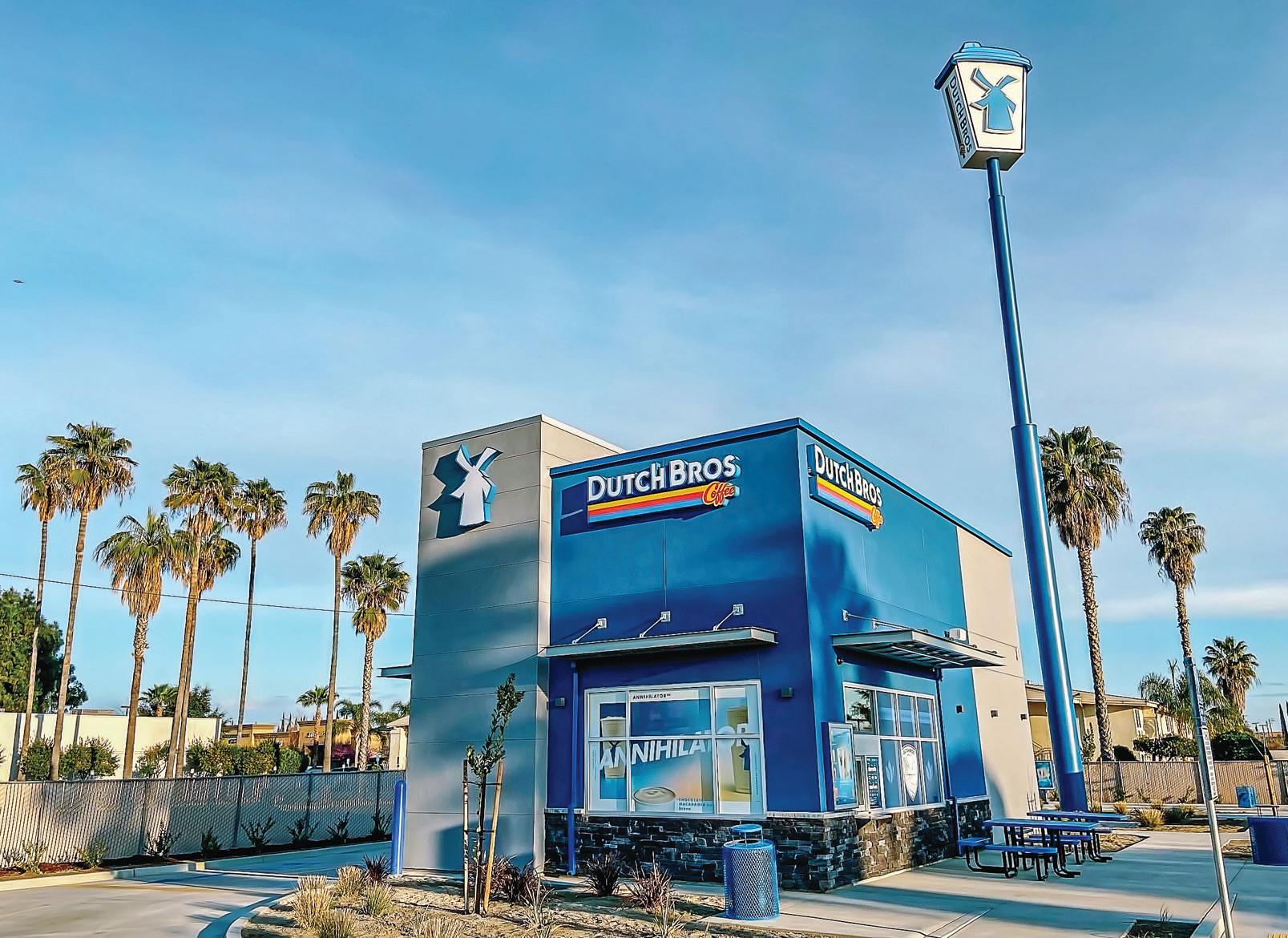
CEO Joth Ricci, who stood behind Trav, recalls Wall Street as an “eye-opening” experience, and one that he couldn’t be more proud of. The celebration wasn’t restricted to top brass either. Dutch Bros brought about 100 team members to the New York Stock Exchange, many of whom had never been to
the Big Apple. It was an opportunity to not only share a special occasion with employees but to allow them to witness a different side of the business.
It was representative of a culture that hadn’t waned in three decades.
“To be with Trav and his family and to celebrate the event with them, and to really have respect for the 30-year journey basically that the family had been on to get to this point and to have them see this brand that they started and that they cultivated and they loved, to be able to be put on really the national—if not the global—stage of going public was really great,” Ricci says. “And to watch Trav ring the bell was a moment in my career that I will never forget.”
In 1992, 21-year-old Trav and his 38-year-old brother Dane were in different places in life. Dane was a father of three, while Trav was “footloose and fancy-free,” he says.
They were third-generation dairy farmers in Oregon facing
We specialize in creating drive-thru systems that are tailored to your specific needs, ensuring that your brand’s messaging is effectively conveyed to your customers. From the color scheme to the menu design, our team will work with you to create a system that is not only aesthetically pleasing but also delivers a seamless customer experience.



HIGHQUALITY CONSTRUCTION FULLY


HIGHRESOLUTION DISPLAYS
MADE IN THE USA
For more information call us at 1-614-850-2540, email us at sales@natsignsys.com or visit our website www.nationalsignsystems.com.
new mandates that would’ve required $150,000 worth of investment. The two were hardly paying the bills as it was.
When it came time to sell the herd, Dane was left at a crossroads. He earned in the neighborhood of $50,000 to $60,000 from the sale and lived a frugal life, but he wanted to make sure his kids could get Air Jordans or make trips to Disneyland. Dane considered getting a job at Walmart or West Coast-based grocery chain, Fred Meyer.
“I was like, ‘Hold up. What? You can’t go do that,’” Trav says. “‘I mean we’ve had all these ideas man. I mean we should at least explore one of them, see what happens.’”
At the time, Trav routinely drank vanilla lattes and suggested they open an espresso cart. To which Dane responded, “what’s an espresso?”
So Trav took him to a local drive-thru called Western Expresso, run by a “hokey, but super smiley” woman who was barefoot and knew customers by name. Dane received his drink first, and Trav couldn’t have asked for a better reaction.
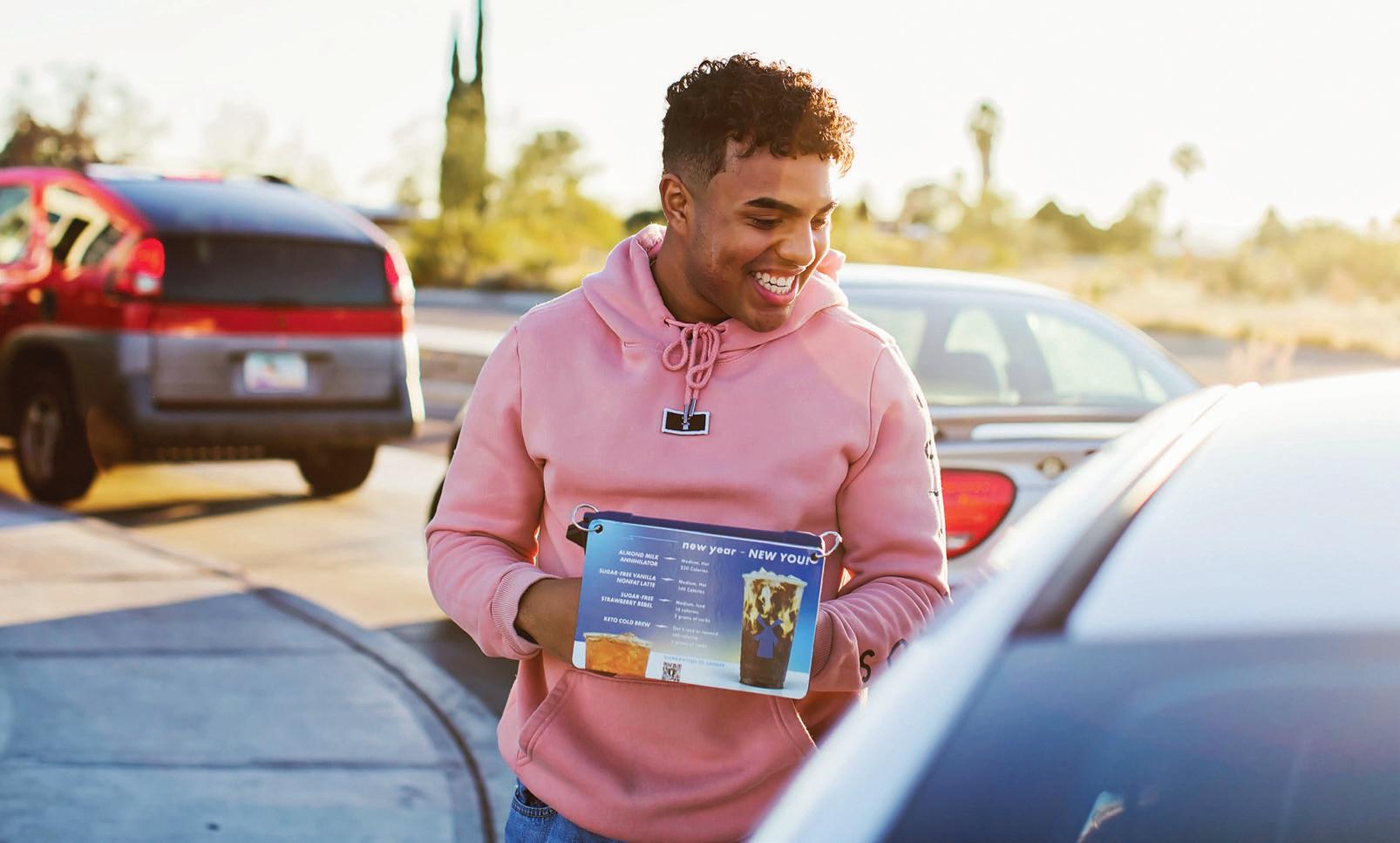
“I look over and he’s licking the milk foam off,” Trav says. “This is unbelievable. I’m like, ‘That’s what I’m talking about dude.’ And so I got mine and we started talking about it. We just dove in.”
In search of an equipment supplier, the brothers drove through the I-5 corridor jamming to the Beatles, Led Zeppelin, Jimi Hendrix, Cream, and Chicago. They stopped in Portland to meet with Boyd’s Coffee, but the pitch sounded too similar
to a used car salesman. Trav and Dane then met with a company in Seattle that showed promise, but the true prize came in Eugene, Oregon, when they met Paul Leighton—a future mentor and friend. He taught the brothers how to pull shots, steam milk, and make cappuccinos, and provided them with several coffee varietals to play with.
Now fully supplied, they invited friends and family to serve as guinea pigs for their budding espresso business.
“It was some of the best times ever as I look back on them, man,” Trav says.
At this point, Dane’s expertise became paramount. He owned a Dairy Queen franchise at 22 years old and understood the importance of speed, simplicity, and how to put together a menu. Perfecting the mocha was crucial. It was the early 90s and espresso was not well known, especially not in Grants Pass, Oregon, where the two were looking to plant their first flag. They were tasked with educating others. The siblings tested Mrs. Richardson’s Hot Fudge, Nestlé Quik, Hersey’s syrup, and Guittard Chocolate—everything one could imagine, Trav says. They settled on chocolate milk from down the street, and it proved to be the game-changer.
“We thought, well, this is a slam dunk,” Trav says. “It’s going to be easy.”
The menu began with a Double Dutch Mocha and Single Dutch Mocha. The price was $1.25 for an 8-ounce drink and $1.75 for 12 ounces. Following the lead of other coffee carts,




Provide your customers with a safer, more convenient food pickup experience. Our Pickup Pod™ offers a streamlined, contact-free way to get delivery without taxing staff or taking up a lot of space. Pickup Pods keep food secure and fresh, and each cubby is individually insulated and features interior lighting to showcase food. And our Pickup Pod is designed to accommodate both hot and cold foods. Customers simply order online and set delivery to the Pickup Pod for pickup at their convenience. Our Pickup Pod is the high-tech way to help attract and retain your customers.
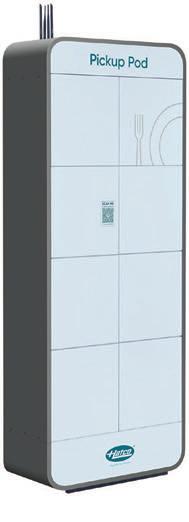

Discover the innovation that fuels our products and drives your success.










Trav and Dane hoped to open their first station at Fred Meyer. They were hyped after applying. A week passed, and there was no phone call. Silence remained after two, then three weeks. So finally Trav called. The store confirmed it received the application and asked the brothers to be patient. A few more weeks flew by, and Trav decided to call again. This time, the response was more snarky. Trav told Fred Meyer about how anxious he and his brother were and that they were ready to go. The store official, not moved, said, “Yeah, well, we’re not ready to go and when we are, we’ll let you know.”
In light of that debacle, Trav and Dane searched for another site and found one in downtown Grants Pass on 6th Street near the U.S. Post Office. The brothers sealed an agreement with the landlord for $150 per month. They were positioned beside an old billboard sign with power outlets, a convenient spot to plug in a grinder and refrigerator.
The Dutch Bros team was set, but nervous—at least one of them was.
“I remember Dane tripping on the first day, like, ‘I don’t know if I can do it, man. This just feels too weird,’” Trav says. “We had a little building behind us that we had set up as our backdrop and our storage facility that we could roll the cart into and lock everything up at night. And he stood back there and I go, ‘Hey dude, I’m gonna make you a mocha and I’m gonna put on some Led Zeppelin and we’ll start rolling here.’”
The pushcart earned around $65 that first day. Trav and Dane were indeed rolling, until the store manager of Grocery Outlet—which shared a parking lot with a strip mall and the cart—directed all of his ire toward the brothers. Full of not-sonice profanities, the Grocery Outlet representative demanded they leave.
“‘I don’t give a f*** who you talked to,’” says Trav, recalling the unadulterated rage from the store manager. “‘This is my parking lot, and I’m gonna move your sh** unless it’s out of here tomorrow. Is that clear? and I’ll do it with my forklift if I’ve got to.’ And I’m like, ‘OK, we don’t want any problems.’ And he’s like, ‘Yeah me either so beat it out of here.’ It’s just like hardcore.”
Undeterred, the brothers returned the next day, making the store manager even angrier. This time, Trav followed him into his office and convinced him to let the pushcart stay for 30 days as an experiment. During one of those days, some of Grocery Outlet’s corporate leadership pulled into the parking lot. One lit up a cigarette, another ordered a cappuccino, and a third received a mocha. Trav and Dane set the tone by offering the beverages for free. The group enjoyed their drinks so much that they praised the store for allowing the pushcart to be in the parking lot.
Thus, Dutch Bros was born—for real this time. A couple of years later, the company opened its first drive-thru. Expansion continued from there. The concept opened its first franchise in 2000. In 2005, Dane was diagnosed with ALS, at which point Trav strapped the business on his back and carried it forward. The biggest change came in 2008 when the chain decided to stop selling franchises to operators who didn’t grow up in the company. They were good people, Trav says, but they just didn’t understand the culture.
Dane passed away in 2009, and the brand honored his legacy by pushing past the Great Recession and kickstarting a new, successful growth path. In 2017, Dutch Bros shut off franchising completely so it could be the sole judge of getting “the best of the best” people in its system.
“Then we could build a pipeline of people and a ladder for them to climb and pay them extraordinarily well and they could build their teams and do leadership development and cultivate culture like nobody’s business,” Trav says. “That people system that we developed I think is one of the best things that we’ve ever done.”
Dutch Bros ended 2022 with 671 shops, making it the third-largest coffee chain in the U.S. in terms of unit count, only trailing Dunkin’ and Starbucks.
In 2023, the brand plans to open 150 stores. That would put the company past 800 units, a goal it set back in 2018 when it received an investment from TSG Consumer Partners. Dutch Bros is also expected to earn $1 billion in revenue on a trailing 12-month basis in late 2023 and surpass 1,000 restaurants by 2025.
Ricci is often asked how Dutch Bros scales culture from Boise, Idaho, to El Paso, Texas, and Knoxville, Tennessee. The company does this through an internal development model in which a team member can’t run a Dutch Bros in a new market without being part of the brand for a long time. He estimates that on average, it takes seven to nine years for people to get promoted into a trade area. Growth is predicated on the availability of talent. The pipeline has to be strong because when Dutch Bros enters a new market, it opens multiple stores as part of an overall fortressing strategy.
At the start of 2023, there were roughly 275 people in the pipeline ready to build new trade areas.
“As I tell people, we’re not a real estate company plugging people into it,” Ricci says. “We’re a people company plugging real estate into it. … We’re taking the best of the best of the leaders that we have currently in the system and then we’re moving them in to basically create what people view is so special with Dutch.”
Valuing experience starts at the top. In February, Christine Barone, formerly the CEO of True Food Kitchen and an executive with Starbucks, joined the company as president. She’s tasked with leading operations and leveraging her knowledge of coffee, service industries, and digital marketing. Her first impression: everyone on the leadership team is genuine, and that carries throughout the organization.
She views Dutch Bros as a company that recognizes employees want to work in places where they can have fun, make connections with colleagues, and go home in a good mood.
“It felt to me like Dutch Bros really just was getting a lot of things incredibly right,” Barone says. “And I also have three teenagers, and so they think I’m very cool now and that was an exciting part of the journey of joining Dutch as well.”
In Q4, shop-level turnover improved about 3 percent quar-
Proven






Exceptional


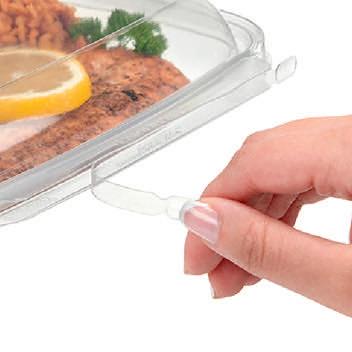

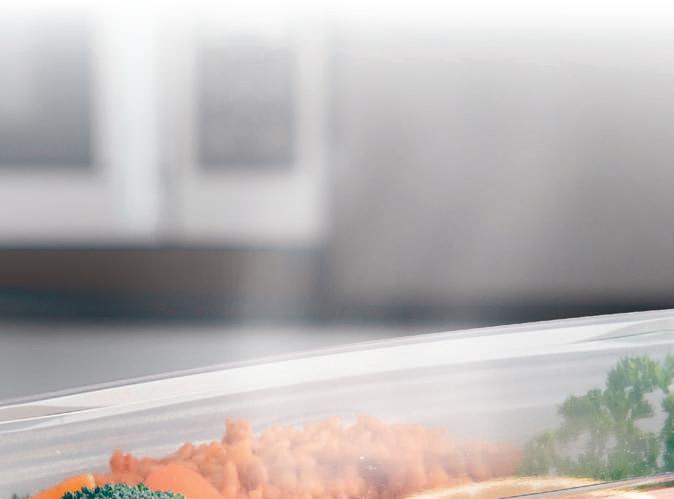




ter-over-year and sat in the mid-70 percent range. Manager turnover was in the low double digits and operator turnover was basically nonexistent. In 2022, the chain promoted more than 2,500 workers in the field, up from 1,700 in 2021. And on January 1, Dutch Bros increased wages across all jurisdictions that rely on the federal minimum wage as their standard.
In Barone’s short time with the brand, she’s watched decisions being made through the lens of the broista ( Dutch Bros’ play on words for barista). How will they feel about this? How will this look inside the shop? How do we make time to understand the hopes and dreams of people on our team?






“Taking the time to really listen and understand where someone’s coming from—it feels like that’s throughout the organization,” Barone says. “So to me it’s the special sauce that’s hard to put your finger on exactly what it is, but it’s absolutely a feeling that you get everywhere from the shop window, up into the headquarters of Grants Pass.”
The same care is given to customers. In 2021, the company launched its first loyalty program, called Dutch Rewards. By Q4 2022, 64 percent of transactions came from rewards members, and there’s room to expand that further in newer stores. Locations open since 2019 have roughly 5 percent lower rewards penetration than restaurants opening before 2019.






Within the loyalty program is Dutch Pass, a feature that allows users to pre-load funds and pay through the app. The







benefit is twofold—customers are offered a contactless form of payment and drive-thru speeds improve. In the fourth quarter, Dutch Bros promoted the Dutch Pass, which doubled the daily average of loads. “I think as we look at the loyalty pro-




“Taking the time to really listen and understand where someone’s coming from— it feels like that’s throughout the organization,”
CHRISTINEBARONE SAYS.
Bring operational efficiencies to your restaurant and elevate your self-ordering experience with ACRELEC’s kiosk solutions, equipped with Glory Cash Payment Systems. The industry leader with over 80,000 installations worldwide, ACRELEC’s innovative technology and personalized AI-driven ordering optimizes your customer journey while increasing the average check by up to 30% more.
acrelec.com/kiosk | marketing.KIOSK@acrelec.com
Copyright 2021 Acrelec. All rights reserved.

gram, it’s really about understanding our guest more and our customers more and what do they want from us,” Barone says. “And so part of that program I think is just learning more about the habits and what people like and helping them understand, well, if you’re someone who really likes to try a lot of different drinks, here’s something you might want to try next and how can we help you do that.”
More than 80 percent of the menu is cold beverages. Dutch Bros’ proprietary energy drink, Blue Rebel, is 27 percent of net sales and helps anchor afternoon and evening dayparts. In the rolling 12 months through Q3, net sales distributed pretty evenly throughout the day: 10 A.M.-3 P.M., 37 percent; before 10 a.m., 27 percent; 3 P M.-8 P M , 27 percent; and after 8 P M , 9 percent. This year, the brand is testing tap systems that will dispense cold brew and Blue Rebel, which should increase throughput and significantly reduce waste throughout the company’s distribution system.
Dutch Bros is a beverage-led concept in every sense of the word. There are a handful of food items, and Ricci doesn’t


expect it to ever become more than that. The chain tested breakfast burritos a few years ago, but they didn’t hold up to company standards.
“I think Trav said it best, he said, ‘So what’s special about opening up plastic wrap around the burrito that was heated in a TurboChef?” Ricci says. “‘How does that make the experience any better?’”

In the next 10–15 years, Dutch Bros wants to break 4,000 locations.

It’s not a baseless prediction, Ricci says. That came from scientific modeling, and the company only kept to promised geographies. The brand uses a smiley face growth strategy where it seeks expansion along the mouth of the smile. Meaning from the Pacific Northwest, California, and the Southwest to the Southeast and Mid-Atlantic. Tennessee was the first state on the East Coast to welcome Dutch Bros. It will be followed by Kentucky and Alabama in 2023 and Florida sometime in 2024.
“I believe the beverage concept is a very scalable concept,” Ricci says. “And just about everywhere you go throughout the country, it is very different from food, where food becomes more regionally based and more regional in how people consume it. Beverage has a much broader base of consumption across big categories.”
It wasn’t always like this. Amid the IPO process, Ricci spent a great deal of time explaining to people what Dutch Bros is and where Grants Pass is located on the map. Not many had heard of it. But during a media tour he conducted after the company’s Q3 2022 earnings call, every interview ended with, “When are you coming to New Jersey?” “Can I get the rights to Long Island?” “How fast will it take to get there?”
Ricci says it’s a testament to what the brand has earned. But Dutch Bros isn’t heading into the Great Lakes or the Northeast. It’ll most likely go as far north as Southern Virginia, according to today’s roadmap.

More attention doesn’t mean a change in plans. The culture is stronger than that.
“I would say that a lot of other people who we work with every day now are just like, ‘Hey bring this to New York, it would be great,’” Ricci says. “But we’ll stay disciplined to what we want to do.”




















A rare bright spot for the restaurant industry during the pandemic, the quick-service pizza category has seen its sales momentum dissipate after several years of COVID-driven tailwinds. Domino’s, Pizza Hut, and Papa Johns reported weaker sales in 2022 amid a challenging delivery environment.



Higher-priced delivery orders were among the first things consumers cut last year as they tightened their wallets, according to Domino’s CEO Russell Weiner.


“As we saw in the last recession, delivery moves with the economy, especially for customers with lower disposable income, who represent a significant portion of our business,” he told investors during the company’s Q4 and full-year earnings call in February. “We expect the economy to be a headwind for our delivery business in 2023.”

A slew of headwinds has category leaders rethinking their playbooks.









Staffing shortages have taken a significant bite of pizza delivery, too. Capacity constraints limited Domino’s and Pizza Hut’s ability to fully meet orders in the channel last year. The impact of staffing shortages on delivery was evident in the first quarter when domestic same-store sales fell 6 percent at Pizza Hut and 3.6 percent at Domino’s. Pizza Hut ended the year with same-store sales down 1 percent. Domino’s saw same-store sales decline 0.8 percent, marking the company’s first negative comps result on an annual basis since 2008. Papa Johns’ same-store sales were up 1 percent for the year, making it the only one of the big three publicly traded pizza chains to deliver positive comps in 2022.
Pizza Hut pivoted and embraced third-party delivery, inte-
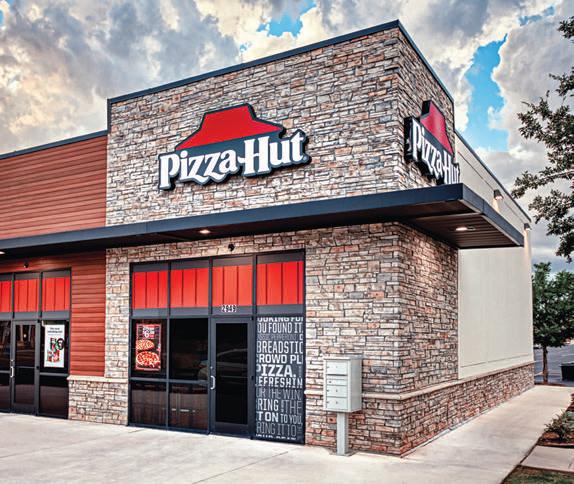


grating white-label delivery into its point-of-sale platform and expanding access to the brand via aggregators’ online marketplaces.
“The integration of third-party delivery apps has enabled Pizza Hut team members to process delivery orders with new levels of ease while also giving us the ability to win new guests and compete for new occasions that a customer may have not previously considered Pizza Hut for,” Pizza Hut president David Graves says. “Aggregators brought incremental customers into our business, and we’ve seen meaningful improvement on delivery sale trends since we started working with them more intentionally in late 2022. In early 2022, we saw approximately five transactions per store through aggregators, and at the end of 2022, we had increased to nearly fifty—based on a weekly total—so, these transactions certainly show a significant lift.”
Franchisees are deciding for themselves how they want to work with aggregators. Increasingly, they’re opting to gain access to both the mobile platforms and the outside delivery drivers to bolster fulfillment during peak times when they need the extra capacity. And since the brand worked to ensure economics are roughly the same across channels, it’s more or less indifferent in terms of where the sales fall.
While Weiner has hinted that Domino’s



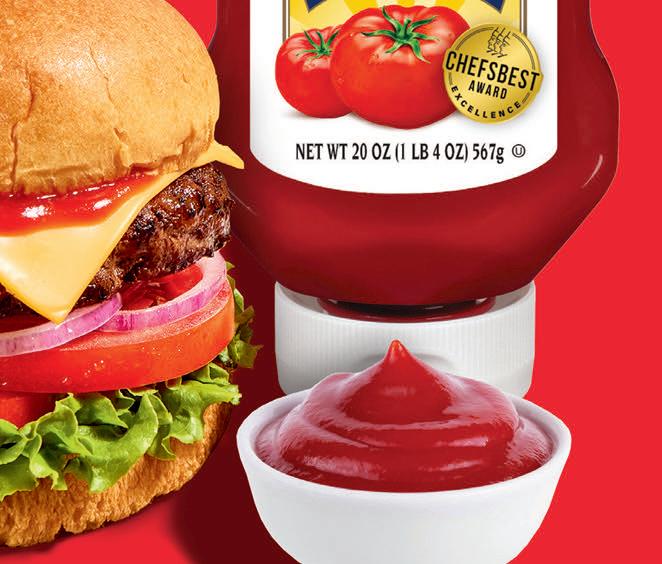







may be considering softening its hardline stance on third-party delivery, the company remains reliant on its drivers to fulfill orders. That means it has had to look within the organization for solutions to the labor challenge.
“We found one answer to the delivery driver shortage by looking inside our own franchise operations,” says Joe Jordan, president of U.S. and global services at Domino’s. “After speaking to some of the franchisees who use their own fleet of vehicles, we found that they provide more opportunity to potential drivers who don’t have a car of their own. So, as a brand, we launched a fleet of more than 800 Chevy Bolt electric vehicles.”
The move, which gave Domino’s the country’s largest electric vehicle delivery fleet, provided several advantages for Domino’s stores, including ample battery life with the potential to have days of deliveries, zero tailpipe emissions, and lower average maintenance costs than nonelectric vehicles, without the financial impact of high gas prices.
Staffing shortages have had a less pronounced impact on Papa Johns, which started working with third-party delivery providers in 2019, and Little Caesars, which got into the aggregator game in 2020. Still, both companies have worked to improve operational efficiencies and ease the burden on team members.
Patrick Cunningham, vice president of U.S. development at Little Caesars, says the company hasn’t been immune from staffing challenges, but it’s benefited from a business model that requires “a significantly lower level of labor.”
“From the back of the store to the front of the store, from delivery of our raw materials all the way through delivery to our guests, the way the store is designed is extremely efficient, and we’ve been able to capitalize on that from a labor perspective,” he says.
Little Caesars has ramped up investments in technology, emphasizing automation, digital menuboards, and other proprietary technology that helps further streamline operations. It also increased wages across the board and offered more flexible schedules for team members.
“Many people who are at higher levels of the organization started as crew members in the store, so we’ve shown that opportunities exist for growth, not only at the restaurant level, but outside of the restaurant level,” Cunningham says. “Those factors have certainly helped us mitigate what’s happening out there right now.”
Pizza Hut adjusted its hiring practices to attract more drivers. It also continues to expand its Dragontail platform, which automates kitchen flow and driver dispatch processes.
“This AI enables us to sequence how we prepare and deliver pizzas, so it is both more seamless for the Pizza Hut team member while also allowing us to get orders to our guests faster and hotter,” Graves says. “It’s been hugely impactful from an operations and team member standpoint and globally, we expect to have Dragontail in over 7,000 stores by the end of 2023.”

Domino’s, meanwhile, is leaning into call centers to field phone orders and free up employees in the store to focus on other tasks. Similarly, Papa Johns has continued to leverage its PapaCall initiative, which brought artificial intelligence into its call centers. CEO Robert Lynch says the technology has reduced the number of dropped calls and lost orders.
Papa Johns also has taken steps to improve its make-line efficiency and streamline its operational models when it comes to dispatching both internal and

Fast. Up to 80% quicker than a conventional oven.
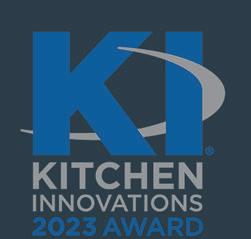

Quiet. Doesn’t interrupt customer engagement.
Easy to install. UL certified ventless, no extraction hood needed.
Easy to use. Intuitive touchscreen for high quality, repeatable results.
Flexible. One appliance to cook, toast, grill and reheat.
external delivery drivers. A renewed focus on efficiency and execution helped it shave 10 minutes off its out-the-door time for orders taken in corporate restaurants.

Building on those efforts, the company late last year unveiled a “Back to Better” operations initiative.
“It really is about us returning to one of the things that made this brand great to begin with, which was great company operations,” Lynch says. “During the pandemic, we were so focused on keeping everyone safe and keeping these restaurants open, that we moved a little bit away from some of the really important KPIs that drive operational productivity and performance.”
Inflation comes and goes, and most pizza chains reported improvements in staffing levels heading into 2023. Challenging year-over-year comparisons offer a partial explanation for the softness in delivery, too. But the normalization of consumer behaviors and a return to in-person dining experiences could
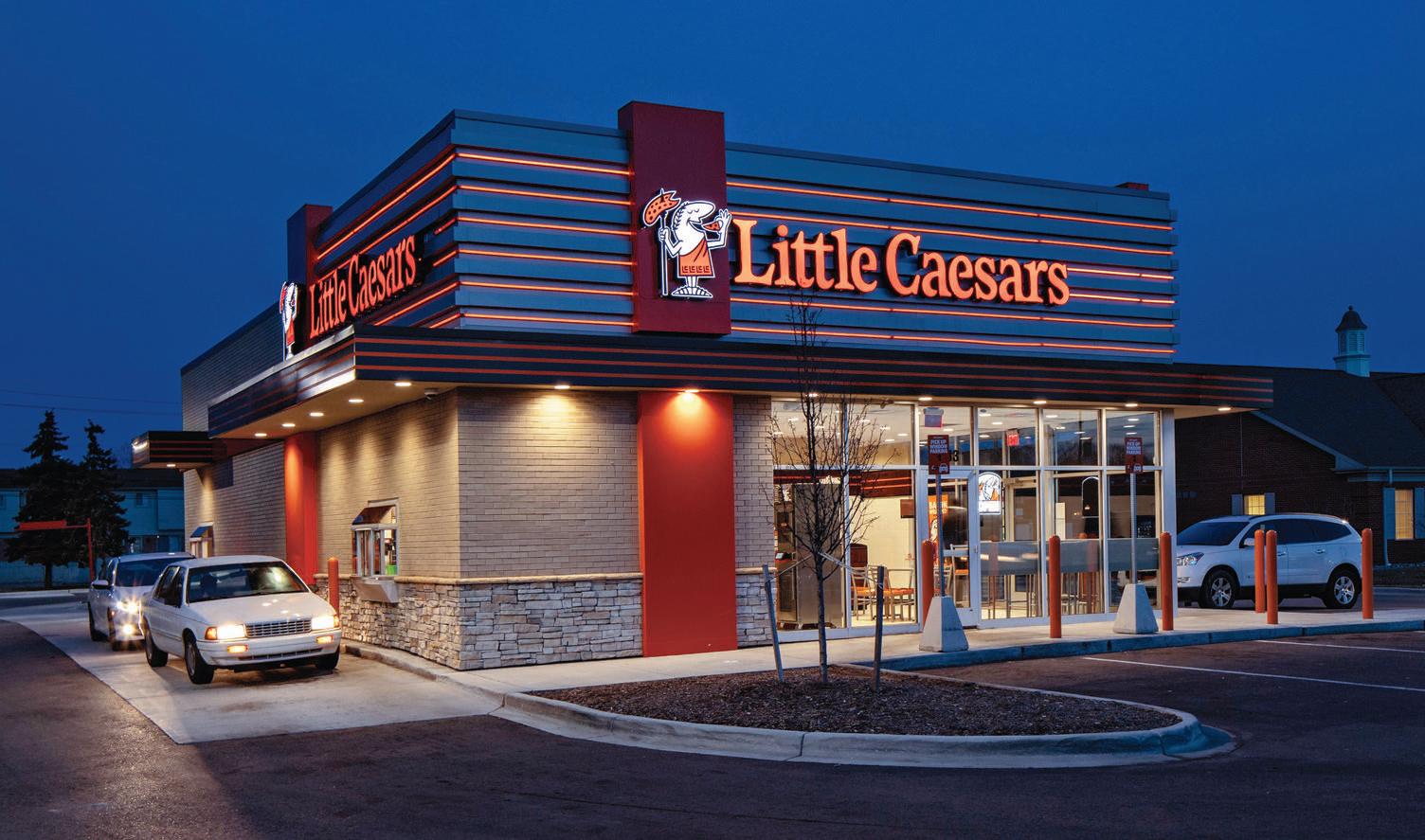
be a longer-term headwind for pizza delivery.
Data from The NPD Group show demand for quick-service delivery in general, not just pizza, declined in the high-single digits last year.
“As consumers returned to many of their pre-COVID eating habits, some of the sit-down business that was a source of volume for restaurant delivery orders returned to that channel,” Weiner told investors in February.
He added that because Domino’s business model is focused on carryout and delivery, the shift back to dine-in has bigger implications for the company compared to non-pizza restaurants that already offered sit down and carryout, but added delivery to their distribution channels during the pandemic.
Pizza’s ease and affordability made it a go-to meal for cashstrapped and homebound consumers as stay-at-home orders and mandated dining room closures swept across the country in 2020. Now, the category is doubling down on value plays in a different environment marked by new macroeconomic and external roadblocks.
With inflation and changing consumer dynamics weighing on delivery, brands are emphasizing deals and promotions to engage price-sensitive consumers in a time of soaring costs.
Pizza Hut launched Menu Melts, a handheld item featuring two slices of pizza that are folded, baked, and served with a dipping sauce. The product, which Graves says was specifically crafted with an individual meal occasion in mind, is priced at $6.99.













“Melts over-indexed to pre-dinner time frames and individual occasion tickets and helped to recover more value-conscious customers due to its strong value proposition,” Graves says. “The success from Melts in Q4 2022 included driving meaningful improvement with transactions, which is a difference maker from what we’re seeing in the category.”
Domino’s also is doubling down on value as it seeks to regain its momentum following one of its most challenging sales years in over a decade. The company took 5.4 percent of price last year, and it turned to promotions and limited-time offers to generate traffic. Last fall, it launched an inflation relief deal, offering 20 percent off menu-priced items ordered online. It also moved its $5.99 Mix and Match deal to $6.99 while expanding the platform with a new Loaded Tots offering.

“They’re actually the first potato items that we’ve offered on our national menu, and they perfectly complement pizza, which we’re always looking to do,” Jordan says. “They’re also part of Domino’s Mix and Match deal, so not only are we bringing a delicious new product to customers, but at a great price.”
Along with filling delivery positions, maintaining a strong value proposition while adjusting to higher food costs is a top concern he’s hearing from conversations with franchisees.



“Whether it’s an inflationary environment or a non-inflationary environment, we need to be the best relative value out there in the quick-service restaurant industry,” Jordan says.
Little Caesars raised the price of its signature Hot-N-Ready Pizza platform from $5 to $5.55, but it also added 33 percent more pepperoni to sweeten the deal. The additional 55 cents is a temporary change while the extra toppings are permanent. Beyond raising prices, Cunningham says, the brand manages macroeconomic headwinds because it controls its own foodservice distribution company.
“The inflation portion continues to be top of mind,” he says. “But from a supply chain perspective, we’re very well positioned. We have a vertically integrated supply chain here that keeps the operators at ease and gives us an edge on the industry.”
Papa Johns is taking a different approach. Instead of aiming for the lowest possible price point, it’s channeled much of its menu innovation efforts toward premium offerings, namely its stuffed crust platform. The company earlier this year debuted its Crispy Parm Pizza, featuring baked cheese underneath the crust.
“We like pushing the envelope on innovation, and customers are really responding,” Lynch says. “We’re going to keep innovating on the premium side.”
That doesn’t mean the company isn’t courting price-sensitive consumers. Papa John’s launched Papa Pairings to compete with Domino’s, Pizza Hut, and Little Caesars on the value front. The platform allows customers to choose two or more items for $6.99 each. Among the offerings included in the deal are medium one-topping pizzas, bread sides like cheese sticks and garlic knots, Papadias, wings, and desserts.

“We’ve been pretty happy with the way our Papa Pairings platform has performed,” Lynch says. “We look at that ‘value’ platform as not just a discount, but a way to drive people to products they may not typically try or even be aware of.”
Papa Johns is optimistic about its outlook for 2023, guiding 2–4 percent growth on an annualized basis. Domino’s lowered its short-term outlook but still expects sales will grow between 2–4 percent over the next two to three years.
While pizza may have to fight harder for its share of the stomach going forward, Cunningham says the classic category’s growth story is far from over.
“I believe that this segment is one of, if not the best, segments to be in,” he says. “It’s seen growth for many years, and it’s going to continue to see growth for many years to come. It’s a segment that is on the top of consumers’ minds seven days a week.”
 Sam Danley is the associate editor of QSR He can be reached at sdanley@wtwhmedia.com
Sam Danley is the associate editor of QSR He can be reached at sdanley@wtwhmedia.com

























POTBELLY IS MAKING NOISE WITH ITS RENEWED FRANCHISE STRATEGY.


Bob Wright’s impression of Potbelly had a familiar tone to it. Few brands draw from bases as deep as the sandwich brand, which opened in 1977 in Peter Hastings’ Lincoln Park antique shop. It didn’t begin growing until a regular, Bryant Keil, purchased the concept from Hastings and scaled it from one to 250 stores over the next 12 years. It first reached double-digits in 2002 as Potbelly left Chicago for the first time, opening in Washington, D.C. Unit 100 arrived three years later, and the company went public in 2013.
/ BY DANNY KLEINPotbelly has never lacked for brand affinity. But it’s just now starting to realize that massive potential.
Along the way, Potbelly carried its Underground Menu, freshbaked cookies, and hand-scooped milkshakes to fresh audiences as it worked to stoke that history.
Yet Potbelly’s cult-like fanbase hasn’t always flowed to topline success. When Wright, a former EVP and COO of Wendy’s, assumed his CEO post in summer 2020, it was a brand known

the first 10 weeks and yet still finished down 10.1 percent—a sign of how steep the COVID cliff truly was.
But all told, the chain Wright took helm of that summer was more than just a pandemic recovery project. It was a comeback years in the works. Potbelly’s fan-centric differentiation was a line circulated to investors for years—one that had yet to cash in.
Wright set course. “I think it’s important to [ know] that before I was approached [for the CEO role], this is a brand I’ve always had a really strong affinity for,” he says. “… The brand is terrific. The food is great. The experience is unique. And when you get that combination of things in the same company, it’s a very defensible point of differentiation and that’s what gets you to grow.”
Wright began with a five-pillar strategy announced publicly in fall 2020: food quality at great value, positive work environment, customer experiences that drive growth, digitally driven awareness, and franchised-focused development. It was taking root behind the curtain. Company-owned same-store sales declined 21 percent in Q3 2020 and 19.4 percent in October, an improvement from a 41.5 percent slide in Q2. Additionally, the brand reached unit-level profitability and traffic soared 21 percentage points.
Those 100 potential store closures? It ended up at just 28, with 321 leases getting renegotiated.
Potbelly has been a rocket since.
as much for its potential as its performance. “For whatever reason,” Wright says, “It just hadn’t realized it.”
Wright arrived in the mouth of the pandemic. Potbelly wasn’t alone with its troubles, which were more pronounced across café-style fast casuals than fast food. Potbelly’s same-store sales dropped nearly 70 percent that March and the company cautioned investors it could permanently shutter up to 100 corporate units. Before getting into what actually happened, it’s worth flipping back another chapter. Potbelly’s turnaround wasn’t a COVID-triggered task.
The brand had a plan called “Project Aurora” in place previrus. Aided by a consulting firm, Potbelly built a “state of powerful tech-based consumer insights” to drive progress. This included everything from menu optimization to quality control to revamped advertising. Also, a “Shop of the Future” model that closed the circle. Sales on the top line dipped 3 percent across 2019 and ran negative every quarter from Q1 2017 to Q4 2019, before the COVID crisis entered the picture. Growth halted in Q3 2019 as the company redirected efforts.
Things had begun to improve somewhat on the doorstep of lockdowns. A Q4 2019 comps decline of 0.1 percent was Potbelly’s best quarter in three years. The brand outperformed the industry in traffic and comps for 11 of 13 weeks, per Black Box Intelligence, and projected a return to positive same-store sales in Q1 2020.
Naturally, nothing about that opening period would prove to be in Potbelly’s crystal ball. Comps rose 2.6 percent across
Total revenues in full-year 2022 increased 19 percent to $452 million. Same-store sales climbed 18.5 percent and units averaged $22,464 per week—a record figure. Potbelly’s Q4 comps of 18.9 percent represented its seventh consecutive quarter of positive gains. Weekly average sales closed the year even higher—at $24,144 (or about $1.2 million on a yearly view). That number was $19,455 in Q1 2022.
On the topic of growth, Potbelly headed into 2023 with signed development area agreements for 51 new shop commitments over the next seven to eight years.
The genesis, Wright says, dials back to the same DNA that hooked him as a customer. If Potbelly couldn’t replicate craveable, high-quality food at a great value, it was going to drown in a beehive of sandwich chains. All of that equity curated over 46 years would become more nostalgia than reality.
“We had to focus on those experiences that would bring people back,” Wright says. “And frankly, our operations needed some attention, and we weren’t necessarily giving people the best reasons to come back. That’s where traffic growth comes from—your own experiences.”
Just like the entire restaurant field, Potbelly had to make the brand digitally available to do so.
The 12 months leading up to the end of fiscal 2021 were a turning point. Potbelly launched a simplified, value-enhancing menu (more on this later), upgraded its tech stack with a revamped app, website, digital ordering integration, and Perks loyalty program, as well as filling out its leadership team with a crop of new hires. In a perhaps less sexy, yet no less vital move, the chain fortified its payment solution as well.
“But it was all in recognition of where the customer was going,” Wright says. “We wanted to make sure we were more





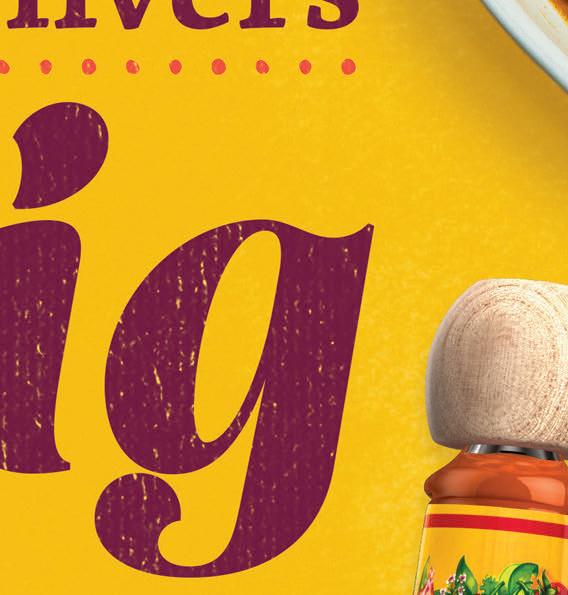






accessible to them, that they could use our digital assets.”
Potbelly’s previous app was a white-label version of somebody else’s—not an uncommon move for restaurant brands. The chain skinned an existing model and branded it. But it wasn’t designed for Potbelly. That flip can’t be understated, Wright says.
The new app and web experience mimics how customers progress when they order in-store. It flows through the same steps, which include picking a sandwich, choosing a size, and selecting the bread. “We’re having this dialogue with you when you come through the shops,” Wright says. “We needed to build a way that could happen in the digital environment and be smooth, with a lot less clicks, but still reflect the way that you would step through if you came inside the restaurant.”
Potbelly’s Perks loyalty program was rebuilt to unlock better data. The ability to earn points and redeem them isn’t where the flip happened for Potbelly; rather it was the ability to foster connection. There are tiers now that offer different experiences. Potbelly can pulse incentives to diners based on how they behave. There’s Perks-only promotion activity, like digital-exclusive deals—such as you see on National Cookie Day—that nurture a VIP-like experience over a straight discount. “And what we found is the brand love that we always knew was there, really comes to life with our Perks consumers,” Wright says. “And so, when you give them special treatment, they turn around and give us additional traffic.”
Digital represented 38 percent of revenue in Q4. Prior to the pandemic, it was single digits. Headed into the final stretch of 2022, Perks boasted north of 2.2 million members and added 115,000 users in just Q3. “It’s digitally targeted in ways that fit [customers’ ] usage of the brand. That’s when it feels like the customer has that experience and they start to feel like the brand really understands me and how I’m using their brand, and therefore it has a lot more upside in terms of frequency,” Wright says.
It’s a formula unfolding across the sector. Use digital promotions to spike acquisition and then follow through with a nurturing campaign that treats consumers differently as they start to develop a frequency pattern. To put in plainly, for Pot-
belly and countless others, it’s a capability that just wasn’t in the playbook a couple of years ago.

Another unique trait of Potbelly, especially among its public, competitive set, is the brand’s makeup. As of December 25, 2022, there were 429 locations. Only 45 of them were franchise shops. The franchising program began around 2010 or so but never quite pieced together. Wright, who’s worked at Charley’s Philly Steaks, Checkers & Rally’s, and Domino’s, and was navigating operations for more than 6,000 North America Wendy’s at the end of his tenure, has been in the franchising space his entire career. He decided early on Potbelly would lean into franchising going forward. The company set a previous goal to refranchise roughly 25 percent of its corporate footprint midterm and eventually ramp up annual franchise unit growth to at least 10 percent.
The big ticket: reach 2,000 stores in the U.S. over the next eight to 10 years and become at least an 85 percent franchised system.
This four-digit target didn’t emerge from the abyss. Potbelly conducted market holding capacity research for the entire country before it let investors in on the plan during a March 2022 quarterly call. The combination of shop development area agreements and refranchising forms the basis for the growth Potbelly has in mind. And all across a diverse lineup of inline, endcap, drive-thru, and nontraditional venues.
Wright says Potbelly used its 2020 stall to prepare to grow again. It started with going for the biggest return items on that five-pillar approach. There were two Potbelly bet on: the tech stack outlined earlier, and the menu.


Potbelly came into COVID already having done extensive work with the latter. In fall 2018, the company tested new menuboards at 58 locations and piloted, for the first time, the inclusion of combos and bundle offers. There was a pick-yourpair option and a make-a-meal choice. By February, the new, enhanced menuboards were systemwide. The biggest change,

























if you look at Potbelly’s center panel of the menu, was to take it down from 55 price points to 18. Management at the time called it, “one heck of a complicated thing.” It was referred to internally as “mission impossible.”
The reason boiled down to simple math. With 486 locations at the time, Potbelly had 680 unique menuboards in terms of size. It had to reprogram the point of sale, redo the company’s app, redo its website, change the loyalty program, and update the catering and delivery functionality for how customers pay.
When Wright walked in, customer data was pointing to a new roadblock—guests had a problem with Potbelly’s value equation.
“The reason we had been bleeding traffic was deeply rooted in what we had done to the value of the Potbelly experience,” he says. “It was with the food. And, basically, what do you get for what you pay.”
In some cases, guest feedback noted they didn’t like what they were paying (prices had gone up). But more vitally, they didn’t feel like the experience had kept up with the hikes. And in just as many instances, Wright says, people felt the food itself wasn’t matching the price point and Potbelly’s past. Again, it flashed the brand drift alarm Wright wanted to guard at all costs.
So Potbelly got to work. Unveiled in August 2021, the brand added a “skinny,” smaller size that lowered the entry point and enabled customers to create pick-and-pair options that better fit their appetites. Alongside, Potbelly made its original size bigger and its “big” even larger. It put more meat and cheese per inch in the larger sandwiches and “just dove in to give the customer more,” Wright says. “And course correct.”
Potbelly tested the platform “for months and months.” Data suggests the brand got it right. The skinny option in particular helped to reshape Potbelly’s accessibility. There were a fair number of lunch consumers who didn’t consider the brand approachable from a price perspective before, Wright says.
Potbelly took some 60 SKUs out in total—a move that ultimately shielded it a bit from commodity chaos in 2021 and 2022, and the inflationary pressures that remain in flux today.
“We kind of reset our base with the new menu,” Wright says. “That gave us a chance to take some modest price increases. I say modest compared to competitors—they’re very high price increases versus what we’ve done in the industry in the past [about 13 percent last year for Potbelly]—but we did it without hurting the value equation.”
Another hallmark of Wright’s leadership is that he’s been a top-line-first operator for more than 35 years. At the foundation, he says, there’s no better way to grow profitability than to grow sales. And getting Potbelly’s unit-level economics to a desirable point was critical to pushing franchise expansion. The brand drove Q4 shop-level margin expansion up 14.2 percent and finished 2022 with shop margins at 10.5 percent. The goal on the whiteboard today is 16 percent.
And it’s rooted in guest response. “That’s why things like Perks and the digital advertising that we’ve done and what we did with the menu, we went right to the heart of the relationship with the customers with the value part of the menu,” Wright says.
In recent history, he adds, the company underinvested when
it came to advertising. CMO David Daniels, who joined the brand in August 2021, previously serving as SVP of marketing at The Food Hall Co. in Dallas, fine-tuned Potbelly’s creative, from refreshed logos to social media placements. Last year, the investment was still only about 2 percent of sales. Video content is on deck. And the new brand work laid down has the potential to work even harder for the brand, Wright says.
There’s also Potbelly’s Digital Kitchen plan, or “PDK,” which supports order accuracy, speed of service, and throughput. The in-shop platform was designed to improve a restaurant’s ability to sort orders, present them to employees, and coordinate processes.
Essentially, what Potbelly did was take advantage of the fact it already had two make-lines and digitized them. The chain can monitor stores with the system and troubleshoot against operational gaps. It can also use data to better deploy labor.
As the calendar turned to 2023, PDK was live in 38 locations, with plans to end the year closer to 100. “We’re getting very, very nice returns on the customer experience,” Wright says. “We’re measuring those shops against control shops for overall customer experience, for order ready on time, which is really critical for digital orders—it’s as important as accuracy … we’re actually seeing some of our early measures on things like food quality, which makes sense on time. It’s ready, it’s hot, and the accuracy is there.”
“And here’s the thing that we’re really enjoying: it definitely is helping us with those more capacity constrained shops.”
PDK provided a boon in efficiency. Wright says it takes seven hours of labor out of shops. “Our managers and teams will tell us, ‘if you take this out, I’m going to leave,’” he says.
Potbelly prioritized other operational efficiencies across 2022, too. It implemented a streamlined training program and refined how managers staff stores with the help of a house-based labor guide. Digital tipping joined the line as well.
Dressed down, operators at all levels have a clearer view of what it means to be “fully staffed” throughout the week. Potbelly made other, less publicized investments in solutions like customer feedback tools and food safety systems that improve consistency and make the store-level business more predictable.
Getting back to growth and where this goes from here, Wright says Potbelly’s 2,000-unit outlook is actually “somewhat conservative.”
“This is where the story becomes interdependent on the other elements of the strategy,” Wright says. “Growing the top line. Getting those margins back to the teams, 16 percent or better, is where it becomes exciting for franchisees. My experience in decades in the space is you want a sales-to-investment ratio that’s exciting for franchisees. You want an earnings capacity that allows you to recoup that investment in a shorter period of time than what the rest of the competition is doing. And what I saw, even though we weren’t performing that way coming out of the pandemic, was all of those pieces coming together. And there was no reason to wait to start to build the infrastructure to support franchise growth.”









The dish that got chef Steve Chu from hot dog cart to full- edged restaurant: Thai Chicken Meatballs. It’s got a little bit of everything – crisp mango slaw, tender, juicy chicken meatballs and of course, that phenomenal bite and texture of Cracked Black Pepper.

TOGETHER, WE FLAVOR




Our Spices. Now that’s a potent combination.













The bad news is that Burger King has been here before. The good news is, so has Patrick Doyle.
The CEO who led Domino’s out of the pizza wilderness to the No. 1 position in the industry over the course of a decade now is at the controls of Burger King, which has spent decades parrying with Wendy’s for the No. 2 spot in the burger world behind McDonald’s. The goal of Doyle, and of Restaurant Brands International, the parent company that tapped him as executive chairman, is to get Burger King permanently ensconced as the unquestioned runner-up that is continually nipping at the dominance of the Golden Arches.

In the effort, Doyle isn’t just a hired hand: He’s got $30 million of his own money invested in putting Burger King on a better long-term trajectory, and a five-year contractual commitment to see it succeed. He’s also got a track record of success with Domino’s and comes to his new challenge with a roadmap for addressing many of the same issues at Burger King.
“I’ve done this before,” Doyle says. “I understand the dynamics and what it takes to get a [fast-food] business moving forward quickly and how to accelerate growth. Some of it is just experience. You can move quickly and confidently when you’ve done it before.”
After retiring from Domino’s in 2018, leaving the Michigan-based chain at the apex of the pizza industry, Doyle spent a few years with the giant Carlyle private-equity firm but didn’t engage in any major gambits there. Now with RBI, Doyle says, he’s drilling into “some big opportunities to create value here.”
Doyle notes that as an investor, “My incentives are perfectly aligned with those of the franchisees. The only way this will work in the medium to long term is if they’re thriving.”
His new company is helping Doyle out by pairing him with Josh Kobza, recently appointed CEO of RBI, who over 11 years already has served as chief operating officer, chief financial officer, and chief technology officer for the Toronto-based operator and owner of Tim Hortons, Popeyes Louisiana Kitchen, and Firehouse Subs.
Before Doyle’s arrival, Burger King already launched an initiative known internally as “Reclaim the Flame:” a $400-million strategic-turnaround effort that includes substantial advertising and digital investments, restaurant remodelings, operational overhauls, and financial incentives for franchisees that successfully leverage what the parent company is doing for the brand.
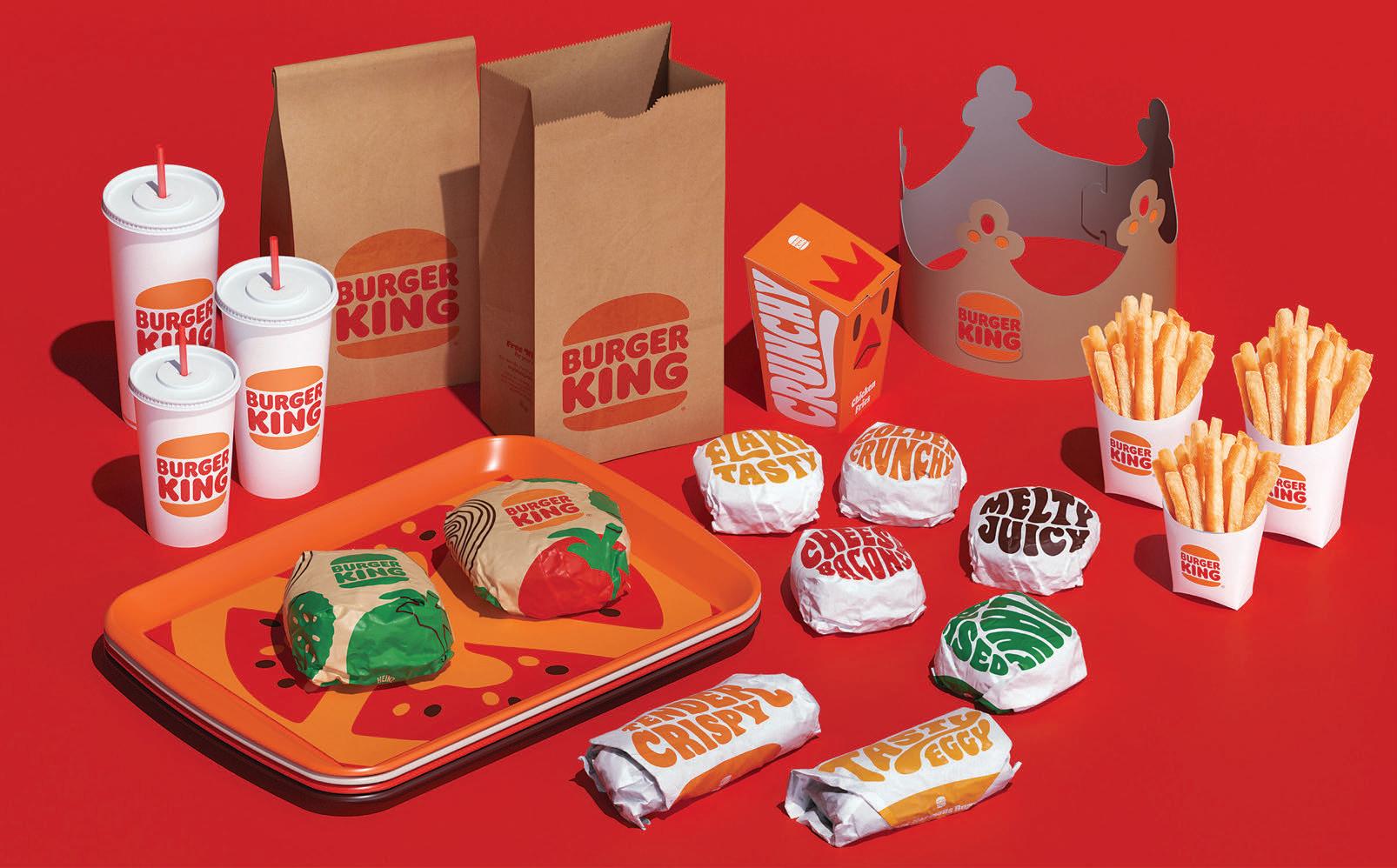
“Their plans already seem to be hitting the mark in customer perceptions: technology, the store, quality—basically what Domino’s playbook was,” says Rich Shank, senior principal and vice president of innovation for Technomic, a restaurant-consulting
firm in Chicago.
But huge obstacles loom, some of which are different than what Doyle faced when he became CEO of a woebegotten Domino’s in 2010. Franchisee health is a main thrust of Doyle’s plan, similar to the challenge he faced at Domino’s, but on a shortterm basis it’s a strong concern for Burger King. The chain remains behind the leaders in important aspects of ordering and operations technology, and Burger King’s new management doesn’t yet have the bandwidth to overhaul some of the other fundamentals of today’s quick-service business, including breakfast and coffee.
Finally, there’s still Wendy’s. The brand isn’t sitting still for any new broadsides from RBI. The Dublin, Ohio-based giant is moving forward with its own revamp, which includes targeting systemwide sales growth in the mid-single-digit percentages through 2025 as it embarks on a restructuring plan to streamline costs and to improve financial returns for well-performing franchisees. That plan was announced at the same time Wendy’s largest shareholder, Trian Fund Management, said it was putting on hold its exploration of “strategic alternatives” for Wendy’s, such as a possible sale.
“I am confident that Wendy’s best days are yet to come,” Wendy’s CEO Todd Penegor told investors.
Nevertheless, Doyle is sanguine about the future of Burger

Just one of many ways BOHA! digitizes your back-of-house.

Ditch the masking tape, paper, and pencils for a solution operators, franchisees, and BoH staff love. BOHA! automates and simplifies everything from labeling, to temping, compliance and HCAAP reports, checklists, employee training, and more:

• Slash labor costs
• Improve accountability
• Prevent unnecessary food waste
• Enhance Food Safety & Quality
Across ALL locations — from the cloud
www.transact-tech.com/qsr-mag
King as well, in part because of the turnaround he led at Domino’s. When he was promoted to CEO of the company after serving as head of international operations and U.S. president for several years, Doyle immediately pivoted to making its pizza taste better, going so far as to apologize personally for Domino’s food quality in a TV commercial.
Just as important, Doyle prioritized the crucial matter of Domino’s franchisees confidence and health as the industry and the economy climbed out of the Great Recession, and he created a new growth arc for the brand on digital ordering and fulfillment technology that a decade ago was just starting to overtake the sector.
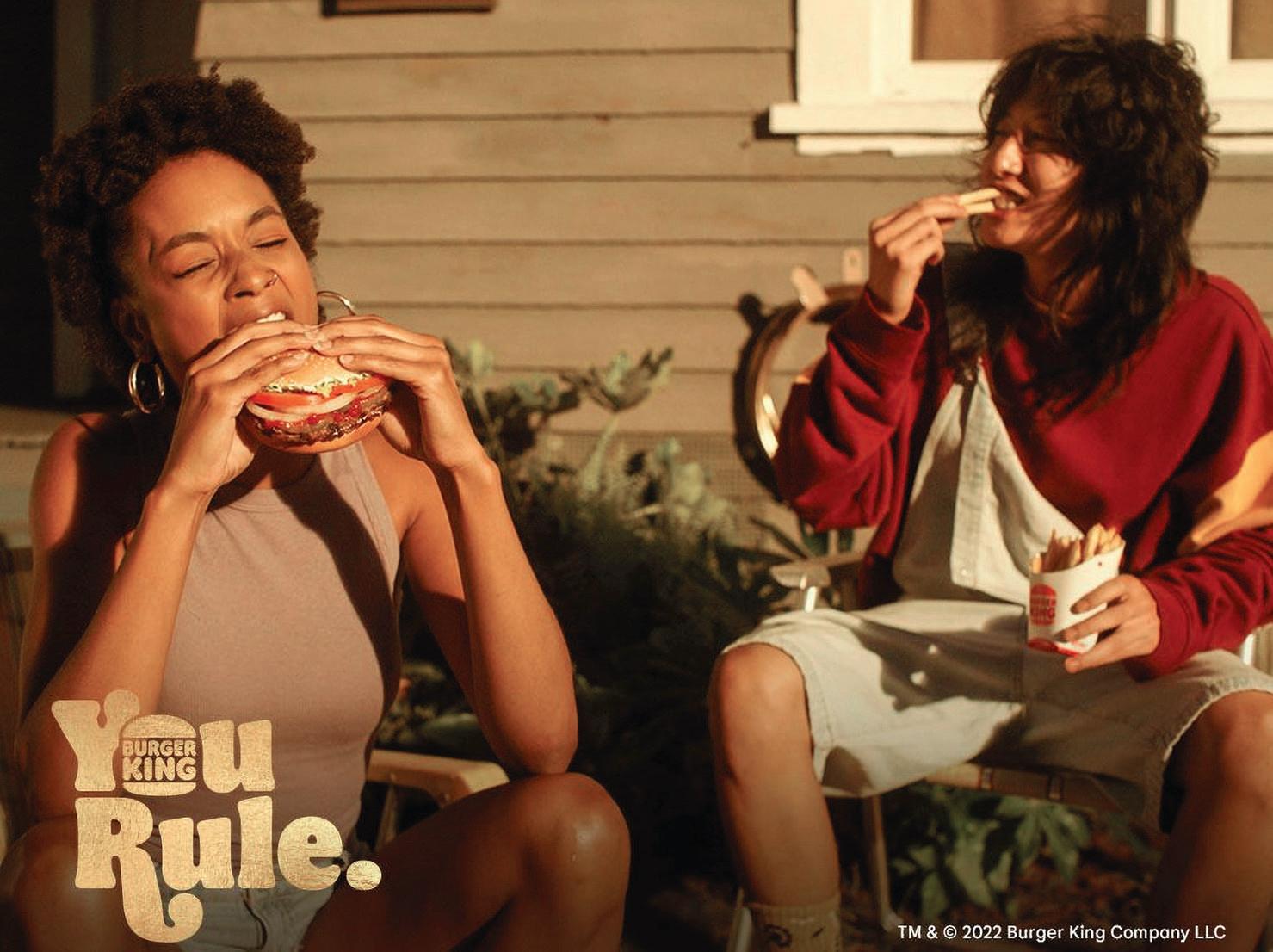
After years of helping run Burger King and launching the “Reclaim the Flame” program last year with another ex-Domino’s executive, Tom Curtis, now president of the U.S. and Canada for Burger King, what Kobza sees today is commitment to “a very substantial investment” by RBI. “It’s a big and comprehensive plan to address all the areas that need focus over a
multiyear period and brings the franchisees along. We’ll put in a lot of money up front, but it requires franchisees to have the confidence to invest as well. There’s a strong element of partnership and a long-term perspective.”
Adds Doyle, “We’re putting additional dollars in, and assuming we get franchisees to certain levels of profitability, they’ll pick it up and invest more into the brand in 2025 and 2026.”
To be sure, some Burger King franchisees face significant difficulties both in awaiting major improvements from the franchisor and coping with their own challenges, including rising wages and other costs, and the paucity of labor. Meridian Restaurants Unlimited, for instance, a 120-unit Burger King franchisee operating across the Plains and western mountain states, declared bankruptcy in March citing those and other issues.
And a couple of weeks after that, EYM King of Michigan, which operates in southern Michigan, moved to close 26 locations and lay off 424 employees after failing to reach a deal with RBI over undisclosed issues.
Kobza concedes franchisees “needed a comprehensive plan for meaningful investment from us to get momentum in the busi-













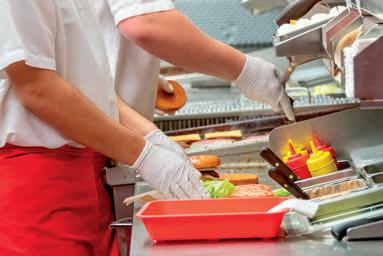


ness again and for them to believe we were putting their success front and center. We have that plan in place, and though it is early, the steps we took to emphasize their profitability [were important].”
Doyle adds, “Restaurants haven’t looked the way they need to” in part because of franchisees’ difficulties. “We need to work cooperatively to improve their cash flow and other things to make their businesses great again. We’ve made a lot of progress in the last several months.” Burger King franchisees’ profitability was up by about 40 percent in the fourth quarter over a year earlier, Kobza says.
At the same time, Burger King has a challenging path ahead to get its digital technology up to par with the rest of the industry. “We have a lot of work to do, but we’re partway through,” Kobza says. Of the $400-million internal initiative, he explains, about $50 million is “just for franchisees to upgrade the technology in their restaurants: point-of-sale terminals, screens in the back of the restaurants, cabling—all will get a big push over the next year or so.”
It’s a good thing, says Olivier Thierry, chief revenue officer for restaurant-tech provider HungerRush. “Burger King is realizing that they have to digitally transform their operations; that’s clear,” he says. “They have to build out a tech stack that brings them into the 21st century.”
At Domino’s, Doyle’s challenge with technology was more about ensuring the chain could become a leader in the digital ordering and fulfillment methods that were just becoming available, especially mobile apps. Domino’s lunged into the online future with hundreds of new tech employees and a flurry of moves to revolutionize customer convenience in ordering pizza and tracking its delivery, and its success in that arena was probably the biggest factor in overtaking Pizza Hut near the end of Doyle’s tenure in 2018.
“It was a big revolution, because Domino’s hadn’t taken technology seriously prior to 2009,” says Aaron Nilsson, chief information officer of Jet’s Pizza, a regional chain based in Sterling Heights, Michigan, who was global in-store technology manager for Domino’s for about three years under Doyle. “It was a giant team effort. But the key thing he did is to take technology in-house and recognize it as a strategic thing and make sure the finances were there to make it happen.”
It won’t be as easy for Doyle and Kobza to leverage digital technology into huge gains at Burger King, Shank says. “They need to make improvements in technology infrastructure, but the wide-open spaces that Domino’s had—that opportunity has been erased for Burger King, because everyone has digital and mobile ordering now.”
Yet Burger King enjoys some big advantages over Domino’s back in the day. Chief among them, the Whopper. “The food is great, and it starts with the Whopper,” Doyle says. “It’s a terrific hamburger. And when you get people to try it, or try it again, and it’s well-executed in the restaurants, you’re going to have a customer that will stick with you.” Ultimately, he told investors
in February, “that is how Burger King competes” with McDonald’s, not to mention Wendy’s and its fresh-meat positioning for hamburgers. Indeed, Curtis has referred to the Whopper as potentially a “multi-billion-dollar brand” on its own.
Consequently, Burger King’s new ad campaign emphasizes the Whopper. Its new jingle starts simply, “Whopper Whopper Whopper Whopper.” The first ad put a hip-hop spin on the chain’s classic jingle from the 1970s, “Have it your way,” also changing the tagline to, “You rule.”
“Burger King has to try to catch up with McDonald’s loyalty program,” Shank says, “and how they leapfrog it will have to be through some creative investments in innovation—not just in food, but in marketing programs. The Whopper jingle has created the earworm they needed to have.”
Kobza says the new advertising “is a smart and thoughtful approach and builds on a lot of our greatest strengths. And it makes sense to our customers.”
Notably, Burger King’s new advertising doesn’t rely on “The King,” a rendered form of the chain’s mascot that dominated its marketing for years as the chain kept using it to appeal to its core audience of young males “When you want to come out and say, ‘This is the new Burger King,’ you need a new wrinkle of identity,” Shank says. “They may use a crown somewhere, but it’s going to look different than ‘The King’ we’ve seen in the last decade or so.”
And Burger King is likely to take a different approach to its long-favored limited-time offerings, which the chain has used repeatedly over the years to appeal to a young base that’s always looking for something new.
“To get trial, [LTOs] make all the sense in the world,” Doyle says. But he steadfastly disfavored LTOs at Domino’s because “if you discount on an ongoing basis to keep customers, it’s a bit dangerous. You have to be careful and know why you’re doing it.”
Otherwise, on the food front, Burger King has replaced its original new chicken sandwich, which was hand-breaded, with a later version that comes into the restaurant pre-breaded. “It’s easier to prepare,” Kobza says. “It’s doing well.”
At the same time, Kobza says, breakfast is “a meaningful daypart,” but Burger King isn’t likely to focus on boosting its breakfast menu—an area where McDonald’s excels—for a while. “Also, our whole beverage platform,” including coffee, is “on the radar. [ They’re] a little further out in the calendar,” he says.
Shank adds Burger King could take advantage of “a big opportunity to do order-ahead coffee through their drivethrus,” perhaps across a co-branding arrangement with Tim Hortons. “But unlike Starbucks, where food is an afterthought, coffee at Burger King would be about the whole meal. It has to be something consumers would crave every morning,” he says.
Committed to a long runway for his major new investment, Doyle notes he’s already satisfied with Burger King’s new tack. “I can’t touch anything for five years,” he says. “And it could certainly go longer than that, if I’m adding value. It’s $30 million. I’m all in.”



















Welcome











The fast-casual world emerging from the pandemic has a new set of rules to play by.
a boost, sure, but, in all, the drive-thru remains the separator. Casual and full-service restaurants generated somewhere around 8 percent of sales outside the four walls pre-virus. That’s climbed closer to 15–20 percent, depending on brand, yet the incrementality, Fox says, remains cloudy. Dine-in traffic, although rocketing out of 2020–2022 lows, isn’t scaling as fast as off-premises, just as was the case in 2019.
But fast casual? Disruption formed two branches. Some chains tagged convenience and an appeal to off-premises consumption as new defining traits. Drive-thru—once a disqualifier—became a must-have. As did digital threads to piece it together, like apps and mobile ordering. The other branch, meanwhile, dug deeper into the roots—cuisine and on-site experiential service.
It’s hard to predict whether these lines will push closer or


further apart going forward. It’s likely the answer falls somewhere between extremes. The table stakes to compete won’t ignore either demand.
One thing is clear, however: fast casual hasn’t lost its appeal. At COVID peak (the quarter ending June 2020), visits to the category fell 23 percent, year-over-year, according to The NPD Group. By year-to-date August 2021, they rose 8 percent and traffic was flat on a two-year basis. Simply, it didn’t take long for guests to find fast casual again.
Per tech research and advisory company Technavio, the market value of fast casual in the U.S. is expected to grow to $28 billion, progressing at a compound annual growth rate of 8 percent from 2020 to 2025. Allied Market Research gave the global field a value of $125.6 billion in 2019. It estimates that will balloon to $209.1 billion by 2027.





Overall satisfaction is:

















5% HIGHER
when the shopper received an email confirmation of their order
9% HIGHER
when the shopper reported it was easy to modify their order
41% HIGHER when the shopper reported it was easy to add items to their cart
O% influenced by whether the order was ready when it was supposed to be




34% HIGHER
when the shopper was satisfied with their pickup experience
6% HIGHER
when the shopper reported it was easy to find the menu items they were looking for
16% HIGHER
when they order through the app rather than the website

when the shopper was required to interact with an employee upon arrival

15% HIGHER

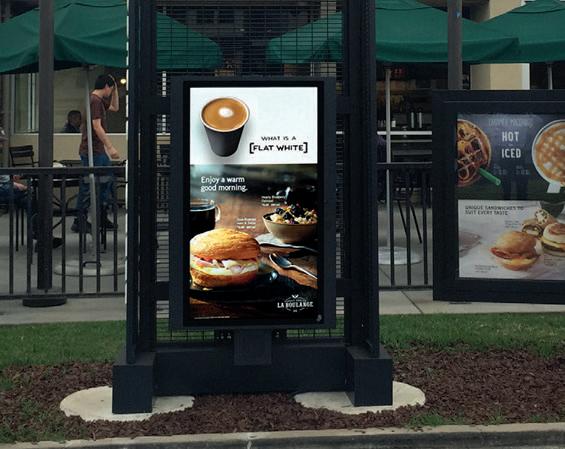






when using the mobile app instead of the website

9% HIGHER



54% HIGHER 8 HIGHER


when clear instructions were provided on pick up your meal instore






In the 12 months 2022, Gen Zers made taurant visits, according data. About 4.3 billion those to quick-service restaurants 736 million to full Overall quick-service traffic pared to the prior fast-casual visits rose 4 percent. “Now is the time to reach these young adults as they enter their peak restaurant usage stage,” David Portalatin, NPD food industry adviser and author of “Eating Patterns in America,” said.
Regardless of where the category is headed, or even what it might look like when it gets there, there’s zero debate the bar has lifted. If COVID bifurcated the landscape on some level, what guests are giving brands credit for—and where the biggest pain points still lie—have become key performance indicators for an evolving world of fast casual.
Along with Intouch Insight, QSR , for the first time, is shar-





























when the shopper reported it was easy to find the menu items they were looking for
61% HIGHER
when the shopper reported it was easy add items to their cart
45% HIGHER when the shopper reported it was easy to modify their order
on the state of guest experience. This dives into fast casual and how these operators are adapting operations to capitalize on the explosive growth of digital. differently, to understand how consumer-driven changes have redefined category’s focus, from layout changes wayfinding.
“Over the past few years, brands have seen explosive growth in their online orders through their website or mobile app, which has precipitated changes in everything from physical designs and layouts to the technology in use to facilitate the ordering process,” says Sarah Beckett, director of marketing at Intouch Insight. “With this new study, we want to set a benchmark that brands can use to measure their own performance and understand how the differences in operational execution impact key performance indicators, like speed and accuracy.


































The report looked at some overarching themes as well as brand-by-brand breakdowns. Eighty mystery shops were per-






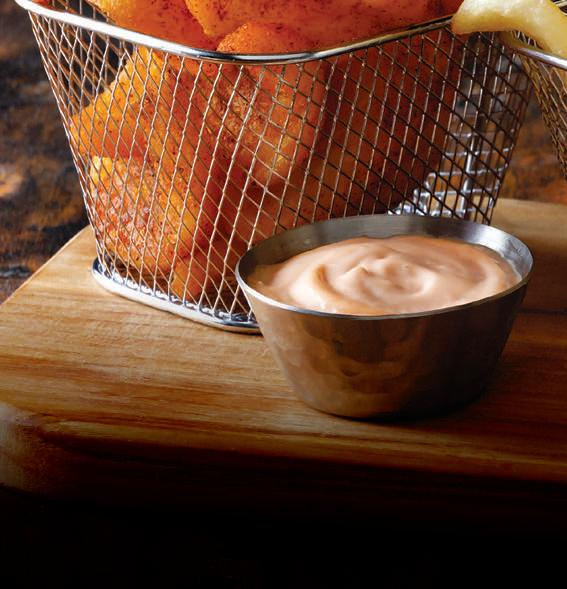






formed at each of the 10 brands: Chipotle, QDOBA, Five Guys, Shake Shack, Panda Express, Noodles & Company, Panera Bread, Jersey Mike’s, McAlister’s Deli, and Chicken Salad Chick. Half at lunch and half at dinner.
“As brands experiment with different operational models to support the growth in mobile orders, those who effectively measure the impacts of these changes and make decisions based on data will be the ones who will ultimately outperform their competition,” Beckett says.
What jumped out to Fox from the report was that having a high level of satisfaction with the pickup experience, which more than anything else means the order is ready when the guest arrives, proved by far the most important thing to get right. The top-two box score for overall satisfaction was 96 percent when the guest rated the pickup experience as a 5.
“This makes complete sense to me, given that when people place a digital order for pickup, saving time is likely at the top of the list of benefits they hoped to enjoy by using that channel of trade,” he says. “Other types of issues with the transaction [ like issues when placing the order] can usually be mitigated. If the order isn’t ready, the primary benefit has been lost.”
That was evident. For those highly satisfied, the order was typically ready well in advance of the promised time.” Having the customer wait an even short amount of time after their arrival erodes the experience in a meaningful way,” Fox says. “There is little margin for error.”
>ORDER AHEAD EXPERIENCE
12% HIGHER when there is signage indicating where a customer should go to pick up their order upon entering the restaurant
8% HIGHER when there is a designated pickup areafor digital orders







Ease of adding items to cart was 3 percent higher for those who used the app


“This reinforces a point I have made for many years with our operators at Firehouse: If you are going to prioritize production, digital orders being picked up by the guest must be at the top of the list,” he adds. “With all other type of transactions, you have an opportunity to make up for slow[er] service. It can feel awkward when a customer who has ordered at the counter is staring you in the face wondering why you aren’t working on their order when no one else is present in the restaurant. But we need to find a way to avoid that pressure, prioritize wisely, and be situationally aware of the need to smooth things over with the in-restaurant customer. Easier said than done, but something we have to strive for.”
ALL ORDERS WERE PLACED ONLINE DIRECT WITH THE BRAND FOR PICKUP IN-STORE.









Beckett echoed Fox’s points. Understanding what levers can be pulled to drive increased customer satisfaction will be critical as the competition continues to heat up, not just in the fast-casual arena, but across all restaurant categories, she notes.

“It’s not just technology that impacts the level of satisfaction with the mobile ordering experience,” Beckett says. “Simple things can have a big impact.”
11% HIGHER when there is a required interaction as part of the pick-up process

When there was required interaction with an employee upon arrival, shoppers perceived grabbing another order by mistake to be 49 percent harder .
 Danny Klein is the editorial director of QSR and FSR He can be reached at dklein@wtwhmedia.com
Danny Klein is the editorial director of QSR and FSR He can be reached at dklein@wtwhmedia.com































































New York restaurateur Danny Meyer and Slutty Vegan owner and CEO Pinky Cole will be the Keynote speakers at this year’s National Restaurant Association Show. As restaurant visionaries and entrepreneurs, they will break down their strategies for building an empire, giving back to the community, and turning passion into profit.

Meyer is the founder, former CEO, and current executive chairman of Union Square Hospitality Group (ushg). He is the mastermind behind a multitude of New York’s most successful dining institutions, such as Shake Shack and North End Grill.
In 2021, Meyer introduced USHG Acquisition Corporation to build and invest in companies that matched USHG’s “employees first” and “enlightened hospitality” values. This is where Slutty Vegan’s Pinky Cole enters the picture.
Who: Danny Meyer, Pinky Cole, Michelle Korsmo
When: Sunday, May 21, 2023, 2 p.m.





Where: Grand Ballroom, S100
Cole is taking the restaurant industry by storm with her Slutty Vegan empire. From humble beginnings in Atlanta to $4 million in revenue within the first six months of its grand opening, Slutty Vegan is a force to be reckoned with. Cole believes in the power of philanthropy and helping others climb the ladder of success in tandem with her own. Additionally, the Association’s president and CEO Michelle Korsmo will speak on the Association’s work to advance the foodservice industry.

The future of the restaurant industry is volatile. Join Technomic, Winsight Media, and top industry operators on a deep dive into the future of labor, menu trends, innovation, industry growth, and more.


The audience will get to choose which topics are covered. Participants will be encouraged to lead the way, ask questions, and allow industry leaders to give insight on pressing issues.
Who: Technomic and Winsight Media





When: Monday, May 22, 2023, 1 p.m.
Where: Grand Ballroom, S100

n SATURDAY, MAY 20
How to Set Your Beverage Program Apart from the Crowd
Learn how to make your beverage program sparkle from the owners of Bronzeville Winery, a sought-after destination in Chicago that blends hospitality with art and culture.
• Who: Cecilia Cuff and Eric Williams
Owner at Bronzeville Winery
• Where:






The Beverage Room Stage Lakeside Center, 11155
• When: 10 A M - 10:30 A M
Are Robots Really the Future of Foodservice? Realities and Opportunities of Robotic Kitchens
How can automated robotic kitchen systems
help with labor shortages, improve employee safety, optimize food quality, improve inventory management, and boost customer satisfaction? Learn how in this educational session.


•Who: Gunpil Hwang CEO at Aniai
• Where: Innovation Theater North Hall, 5572
• When: 11:30 A M - 12 P M
Igniting Passion & Commitment of People in Today’s Climate with Practical Benefits, Resources, and Approaches to Win Seasoned C-suite and HR executives weigh in on their practical strategies for implementing programs that ignite passion in people to solve today’s challenges. In a business atmosphere that is surrounded by chaos in labor, supply chain, and customer
volatility, learn how operators are winning to attract, retain, and engage their network.




• Who: Rachael Kelly
Former Chief People & Culture Officer at Smokey Bones, Board Member at CORE (children of restaurant employees), Founder & CEO at HiveStrong
Where: Education Super Center South Hall, 2778
• When: 12 P M - 12:30 P M
Stepping Over the Edge: How Web3 is Changing the Landscape of Restaurants
Learn how web3 technologies are changing the face of the restaurant industry through NFTs and the metaverse. These huge technological shifts are presenting opportunities for restaurants to create a more interactive and engaging experience for customers.
• Who: Skip Kimpel Principal of Independent & SMB Consulting at ConStrata Consulting
• Where: Education Super Center South Hall, 2778
• When: 1:30 P M - 2 P M
Quick and Effective Ideas to Boost Your Bar Business, From the Women Who Run the Bar
Join members of Badass Bartender, one of the fastest-growing Facebook Groups for women bartenders, in an explosive discussion swirling around topics such as increasing bar traffic, generating profits, and growing customer loyalty.
• Where: The Beverage Room Stage Lakeside Center, 11155
• When:
Navigating the Ever-Changing Regulatory Landscape of Alcohol Sales
With alcohol-related laws progressively becoming more complex and varied, it’s more important than ever to keep up with them. ServSafe experts and operators share ways to get ahead of the competition and offer guests responsible alcohol service.

• Who: Trevor Estelle VP, ServSafe Alcohol & Regulatory Services at National Restaurant Association
Where: The Beverage Room Stage Lakeside Center, 11155
• When: 10
M - 10:30
Introducing the OneDine otg Tablet



Order • Pay • Engage
• Easy-to-read 7” screen


• EMV, NFC, and Processor Agnostic




• All-day battery with rapid charging tower


• Dual LTE Connectivity




• Interfaces with existing POS, Loyalty, Gift, and Processor


• Increase table turns, eliminate lines, and improve the guest experience
• Higher staff wages, tips, and retention

The Future of Front of House
By utilizing appropriate front of house tech, restaurants can handle table availability, reservations, and guest communications. And there is ample scope for enhancement.
• Who: Anthony Cross VP Product at Yelp for Restaurants, Jessie Li
General Manager at Qing Xiang Yuan Dumplings, and Reggie Guerrero Shabuya Restaurants
• Where: Innovation Theater North Hall, 5572
• When: 10 A M - 10:45 A M
Managing Training and HR When You are Responsible for Both
Acquire an understanding of the skills and knowledge required to lead both departments as a unified entity.
• Who: Christine Andrews VP, People & Culture at Hostmark Hospitality Group and Jennifer Belk White Human Resources Director at Lumina Foods
• Where: Education Super Center South Hall, 2778
• When: 10:15 A M - 10:45 A M
Demystifying Marketing: Tech Hacks to Grow
Sales and Pinpoint What’s Working Buckle up for an interactive discussion displaying success stories from reallife restaurants that have tapped into their marketing superpowers through simple tech hacks. Learn how these restaurants have built high-impact, cost-effective marketing programs that amplify both traffic and revenue.
• Who: Brendan Sweeny CEO and Co-founder at Popmenu, Kat Johnson, Director of Marketing & Communications at Chai Pani Restaurant Group, and Tony Roy, COO and Co-founder at Popmenu
Are you ready to witness culinary excellence live on stage? This year’s National Restaurant Association Show hosts cooking demonstrations by restaurant pioneers, disruptors, and imagineers. Be sure to stop by The Culinary Experience, Lakeside Level 3, 10448
SATURDAY, MAY 20, 2023
Lauren Von Der Pool
Chef, Entrepreneur, and Philanthropist
• When: 12 P.M.-12:45 P.M.
SUNDAY, MAY 21, 2023
Brian Duffy
Chef, TV Personality, and Hospitality Consultant
• When: 11:30 A .M.-12:15 P.M.
MONDAY, MAY 22, 2023
Sean Sherman
Founder/CEO The Sioux Chef




Co-Owner Owamni by The Sioux Chef
When: 12 P M -12:45 P M
TUESDAY, MAY 23, 2023
Miguel Trinidad
Chef, Restaurateur, Author • Owner Jeepney and Maharlika • Co-Founder 99th Floor NYC Catering
• When: 12 P M -12:45 P M
• Where: Innovation Theater North Hall, 5572
• When: 11:30 A M - 12:00 P M
Brazilian Foodservice Outlook and What It Could Mean for the Rest of the World
As the fifth-largest foodservice market in the world and the third in food production, Brazil is expected to grow at an unprecedented pace. But what does this mean for global operators? Experts weigh in on consumer trends that are driving expansion and the strategies that operators are utilizing to meet the surge in demand.
• Who: Cristina Souza
Founder and CEO at Gouvea Foodservice and Eduardo Bueno
Head of Research and Intelligence at Mosaiclab
Where:
Education Super Center South Hall, 2778
• When: 12 P M - 12:30 P M
Harnessing Technology to Streamline Your Restaurant Operations
In this economy, it is vital for restaurants to streamline their operations. Evaluating new technology solutions early on is crucial for this process, and this educational session will feature speakers that are wellversed in future-looking strategies to grow revenue and boost efficiency.
Where:
Innovation Theater
North Hall, 5572
• When: 12:30 P M.-1:15 P M
The Power of Loyalty Programs
Loyalty programs help tap into consumer culture and can offer key nuggets of information that can be infused into business campaigns to grow restaurant traffic—but how are they optimized? Discover how restaurants are launching loyalty programs that stick, whether that be from a 360 approach or from custom social content.
• Who: Nathan Casey Executive Director, CRM, Loyalty, Digital Ecommerce at IHOP
• Where: Education Super Center South Hall, 2778
• When:
1 P M - 1:30 P M
Leveling Up Your Bar & Restaurant Spaces: Design Principles that Can Help Expand Your Audience, Elevate the Customer Experience, and Increase Your ROI Meet with design experts to learn ways to boost revenue through restaurant and bar layouts. Creating a space that is both functional and pleasing to the eye is a surefire way to attract guests, increase engagement, and increase check averages. Experts weigh in on design principles that can elevate your space, no matter the budget.
• Who: David Ashen President & Founder at dash design, Keith Halfmann President & CEO at Endurance Management Group, and Kristin Cullen Design Director — F&B Studio at dash design
Where: The Beverage Room Stage Lakeside Center, 11155
When:
10 A M - 10:30 A M
Build Your Dream Team with the Right Tech
Re-imagining ways to hire and retain staff does not just stop once the employee is in the door. Join tech experts and industry leaders in a discussion on using better management techniques, transparency, and the right technology to craft a more productive team.
Who: Caitlin Riemensnider
Sr. Client Success Manager at SpotOn and Emma Blecker
Chief of Staff & Director of Business Systems at Boqueria Restaurants
• Where: Innovation Theater North Hall, 5572
When: 10 A M - 10:45 A M



































KEYNOTE SPEAKERS:



Introducing the QSR Evolution Conference—the ultimate destination for anyone in the quick-service restaurant industry looking to stay ahead of the game.




Join us for two days of informative sessions, expert speakers, and networking opportunities. Discover the latest industry trends, gain insights into customer behavior, and learn about cutting-edge technology that can help take your business to the next level.


Don't miss out on this exciting opportunity to connect with fellow industry professionals and gain a competitive edge in the ever-changing world of quick-service restaurants. Register now and secure your spot at the QSR Evolution Conference—the must-attend event of the year!
QSREVOLUTIONCONFERENCE.COM




It is now paramount to dial in on employee health and wellbeing. Many employees left the industry in search of a better work-life balance, and left restaurants with the task of creating a more balanced atmosphere for their staff. This session explores methods and strategies focusing on addressing employee health and wellness issues in the workplace.
• Who: Deborah Popely
Associate Professor and Chair of Hospitality Management at Kendall College and Leigh Uhlir
Dean at Kendall College at National Louis University
• Where: Education Super Center South Hall, 2778
• When: 12 P M - 12:30 P M
As culture shifts push diners to become savvier, restaurants need to pace-match to avoid losing guests and loyalty. This interactive discussion explores ways that operators can leverage collaborations with nontraditional vendors to create new dishes, as well as recognize food trends that are well-adjusted to today’s customer profile. Attendees will also learn about the impact that BIPOC diners have on restaurant culture.
• Who: Darnell Reed
Chef/Owner at Luellas Southern Kitchen, Kenneth Polk
Executive Chef/Partner at Batter & Berries, Chloe Gould
Executive Chef/Owner at DixiePura Kitchen, and Erika Durham
Project Lead at Bronzeville Community Kitchen
• Where: Education Super Center South Hall, 2778
• When: 2:30 P M - 3 P M
Discover the most recent advancements in online food ordering and delivery

services that belong to the next generation, which can enhance your business’s visibility and increase its sales. Acquire knowledge on how to revolutionize your restaurant’s delivery system by taking charge of your customer data, reducing fees, and establishing a more effortless and exceptional customer experience.
• Who: Joe Reinstein
Executive Director at Digital Restaurant Association and Mike Murphy Head of Industry, Restaurants at Google
• Where: Innovation Theater, North Hall, 5572
• When: 3 P M - 3:45 P M
Investing in People: The Secret Sauce to Hiring & Retention
When time is short and money is tight, knowing how to leverage your resources to bring in and keep top talent is a necessary skill. This panel is being held by the National Restaurant Education Foundation and incorporates both employers and foodservice employees. Together, they will share the secret sauce to nurturing impactful careers in hospitality.
• Who: Edward Walden Director, Professional Advancement at National Restaurant Educational Foundation
• Where: Education Super Center South Hall, 2778
• When: 3:15 P M - 3:45 P M
How to Build and Sustain a Profitable Off-Premises Catering Business
Find the gaps in your current catering strategy through this educational session and learn how to close them. In this session, catering experts will weigh in on exactly what it takes to organize and execute a successful catering business.
• Who: Jim Rand Operating Partner at Act III Holdings
• Where: Education Super Center South Hall, 2778
When:





































4 P M - 4:30 P M

Reimagining Advertising: How to Break Through the Social Media Noise and Create Authentic Viral Moments
Tapping into social media and following culture is one of the most impactful things a restaurant can do to better resonate with their customers. Sit down with marketing leaders as they pull the covers off and share the secrets to effectively leverage social media, create authentic viral moments, and remain agile in an organic way.
Who: Jae Goodman Founder at Observatory, and Joel Yashinsky
Senior Vice President and Chief Marketing Officer at Applebee’s



























• Where: Innovation Theater North Hall, 5572
• When: 4 P M - 4:45 P M
TUESDAY, MAY 23
Restructuring a Restaurant’s Relationship with Gen Z
While Gen Z’s buying power continues to grow, they are dining out less than millennials, according to The NPD Group. Join this educational session for a deep dive into the psyche
of Gen Z, how their relationship to restaurants has changed, and how restaurants are restructuring to win this generation over.
• Who: Graham Humphreys
CEO at The Culinary Edge, and Nikki Freihofer
Associate Director, Strategy at The Culinary Edge







• Where: Innovation Theater North Hall, 5572
When: 10 A M - 10:45 A M
The Role of Cultural Competency in Hospitality Sales and Staffing
• Where: Education Super Center, South Hall, 2778
When: 10:30 A M - 11:15 A M
Love at First Like: How to Leverage Social Media to Gain


IRL Customers
Limited resources? Lack of expertise? No problem. This educational session will show you how to keep up with the trends of social media marketing in a costefficient, effective way. Learn how to win customers over through social media and build brand affinity.
• Who: Jennifer Kaminski, Managing Director at Social Thinkking & 2 Korean Girls
• Where: Education Super Center, South Hall, 2778
• When: 12 P M - 12:30 P M
The State of Labor in Foodservice and Solutions to Move the Industry Forward

Recruiting and retaining staff is still the foodservice industry’s Achilles’ heel. Join experts as they break down data, discuss strategies to strengthen recruitment and retention, and share ideas on how the foodservice industry can move forward to improve these issues.
• Who: James Griffin Professor, College of Hospitality Management at Johnson & Wales University
• Where: Innovation Theater North Hall, 5572
When: 12:30 P M - 1:15 P M
100% recyclable branded take-out packaging for easy mobile pickup, catering, and drive-thru orders. Come visit us




Multi-brand platform WOWorks seeks streamlined operations to unlock further growth.
chisees love it.”
In guest retention and acquisition, PUNCHH has offered improved support. It allows for direct messaging between the guest and the brand, a sharpened loyalty program, and the ability to run promotions. Mark believes PUNCHH and the data it provides are the future of what cross-brand loyalty looks like.
“The biggest benefit of PUNCHH is that we can really know the guests,” Mark says. “It’s all about the data and using it to help all our brands.”
The refined loyalty program uses customer data to find correlations between WOWorks offerings and invites guests to visit co-brand locations, thus strengthening the relationship between customers and restaurants.
Additionally, WOWorks is using technology to ramp up its virtual brand presence. An example of this venture is Soupworks, a virtual extension of Saladworks.
WOWorks, a company full of better-for-you restaurants, put itself in a prime position for growth in 2023, with one of its most important ventures being renewed technology integrations.
These new partnerships include QU, OLO Rails, OLO Dispatch, PUNCHH, and World Pay.
The updates will improve operations for WOWorks’s point-ofsale systems, menu management platforms, third-party delivery options, payment processing, and customer loyalty programs.
As of now, four of six WOWorks brands have moved seamlessly onto one tech stack, with plans to integrate Zoup! Eatery and Barberitos later this year. The company acquired the two chains in 2022 for an undisclosed amount, joining Saladworks, Frutta Bowls, Garbanzo Mediterranean Fresh, and The Simple Greek.

The tech stack upgrades are proving beneficial for employees, customers, and franchisees alike.
“We have several franchisees that own multiple brands, so for them to be able to have one system operationally is a major win for them,” says Kyle Mark, CIO of WOWorks. “Cross-brand fran-
“We put Soupworks on third-party partners and it’s done extremely well,” Mark says. “So, what we’re looking at now is our first phase of doing this same thing with our other brands and focusing in on those lesser-known aspects that we offer.”
Phase two of WOWorks’s virtual brand integration will include launching the latest items, which either need to be tested or would not work in a brick-and-mortar environment. Either way, Mark sees these ghost concepts as an additional segment of revenue.
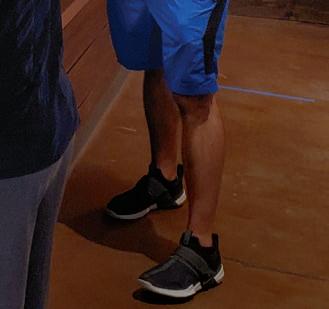
In other instances, WOWorks will team with outside sources, like Virtual Dining Concepts.
“We’re partnering with other companies like Virtual Dining Concepts for some of their pieces that we can offer in-store,” Mark explains. “We’re doing a pilot phase with Cake Boss right now, and that’s a major initiative for us.”
WOWorks’ technological transformation didn’t come without skepticism. Marks explains that at first, franchisees were hesitant to rip out their systems in favor of a new one. There were concerns about employee training slowing operations, but the result was far from it.
“With this new technology, we were focused on ease of use,” Mark says. “It was fun to watch employees pick up on it immediately.”
Multi-unit franchisees are among the first to experience the



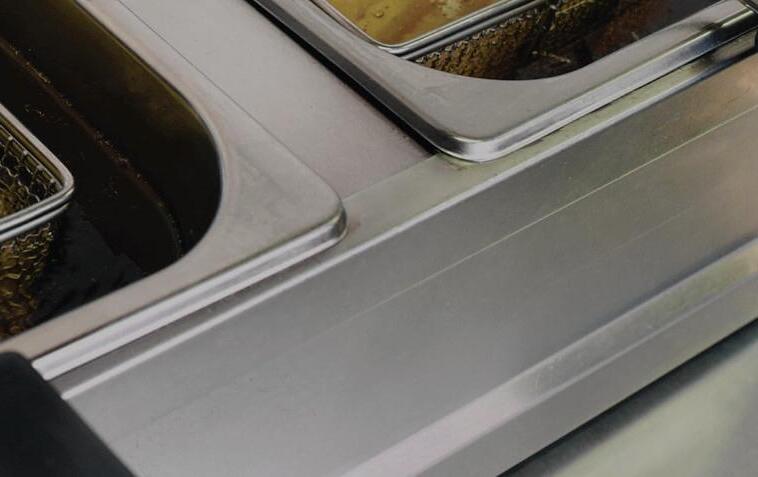








benefit of these partnerships. They are seeing a greater level of operational efficiency than ever before, and this is trickling down to single-unit franchisees, who are taking advantage of the wealth of data now available to them through technology like OLO, QU, and World Pay, Mark says.
OLO Rails allows one location to manage multiple menus and automatically distributes them to third-party marketplaces. OLO Dispatch offers branded delivery directly through sites and apps to strengthen the relationship between the concept and the guest.
Likewise, OLO’s menu management system keeps WOWorks from having to cut online options. This is beneficial to customers and franchisees, as anything done in-store can also be done online.
“I’ve seen brands cut what they offer on their website because whatever system they’re using might not be capable. So that’s one of the reasons we went with OLO specifically,” Mark explains. “They offer a lot of menu management options to make that easier […] but also for the customer to see, absorb, and decide on what they want.”
For a company like WOWorks, creating consistency with six distinct brands is paramount. Marks says the brand is continuously working towards creating “The WOW! Way” in its operations, technology, and marketing departments.
Additionally, WOWorks continues to grow its network of franchisees. There are franchising opportunities available in 49 states (all except Hawaii) Franchise owners, like the brand’s portfolio, are incredibly diverse, with backgrounds ranging from the mili-
tary to hospitality.
Systemwide, WOWorks operates more than 350 locations and oversees more than 7,000 employees. In 2022, it opened 14 units (four Saladworks, two Frutta Bowls, one Garbanzo Mediterranean Fresh, three Zoup! Eatery, and four co-brand locations) and signed 21 franchise deals (eight Saladworks, two Garbanzo Mediterranean Fresh, eight Frutta Bowls including co-brand locations, two Barberitos, and one Zoup! Eatery) The company also opened two new hubs with ghost kitchen operator REEF Technology, raised $150,000 for No Kid Hungry, and provided 1.5 million meals for children with food insecurity.

In 2023, the company’s first major goal is to get all six of its brands onto a single tech stack. Work is being done on the back end to unify databases as well. The multi-brand platform will also use polished technology to build a custom intranet called “WOWnet,” which will eventually become the centerpiece of all operations.

“We’re building a data warehouse on the back end to store all of our data and make that readily accessible to everybody,” Mark says. “Then we can make more decisions based on that data versus intuition. We’re heavily data-driven, so that’s one of our big focuses for 2023.”
WOWorks is looking forward to a new year full of innovation, strategy, and growth between brands, Mark says.
and create better food more e ciently, with


Portion Pal™
DISCOVER MORE!

VISIT US AT BOOTH #3961

DISPENSING, REINVENTED!

single best place to find innovation on display. Conversation with vendors may unveil opportunities for your business that you didn’t even know existed prior to the show.
Innovation is not a word commonly associated with restaurants. I think most would agree that the industry has had a reputation for being slow to develop or adopt new technology. It’s not that we aren’t a creative bunch; just look at our ideation around cuisine. On that front, there is a never-ending stream of experimentation by chefs that perpetually test the public’s threshold for embracing new flavors and textures. If there is a limit placed on creativity, it is not on the part of the food artist, but rather, the culinary proclivities of patrons.
The month of May and the restaurant industry’s premier event are inextricably linked. This year’s National Restaurant Association Show runs from May 20–23. If you only manage to break free for one industry experience in 2023, this is the one to have on your calendar. If you want to see the latest and greatest that the industry has to offer, Chicago is the place to be.


When you walk the show floor, you’ll have the opportunity to look at our industry from every angle. If you attend with specific interests in mind, such as discovering options for a particular menu ingredient or sourcing a new piece of equipment, odds are you are going to find something of interest. Sure, you can browse websites to your heart’s content from the comfort of home, but at least for this restaurant veteran, being able to engage all your senses trumps the internet. Suppliers will be eager to hear about the challenges you have in your business or the opportunities you are attempting to exploit. They won’t hesitate to sow seeds for how they can help you achieve your goals.
Even if you aren’t in search of specific solutions, you should still attend and simply walk the floor for the sake of discovery. It’s the
While we may excel at creating new menu items that appeal to the palate, our collective penchant for invention hasn’t often extended into the realm of technology. Other than perhaps the basic concept of the drive-thru (which is far from inconsequential, by the way), I’m hard pressed to think of an invention that was birthed by the restaurant industry and then adopted in an impactful way by our broader society. Even when it comes to repurposing technology born in other corners of the economy, we have earned a reputation as laggards.
Is this reputation deserved in 2023? Perhaps, but increasingly, this is more a matter of perception than reality. Embracing digital interaction with the guest is the most salient arena for the industry’s adoption of new technology. While much of this involves work on the customer-facing side of technology, applications behind the counter and in the kitchen are increasing. The forecasting of demand and queuing of production are front in center of the needs of our industry. Any slowness in adopting solutions on this front is not a matter of lack of desire to do so, but rather, the inherent difficulty in inventing a solution that adequately addresses the challenge. In many respects, operating a restaurant day-to-day is more difficult than a lot of other businesses. The flow and complexity of our business is greater than most. Indeed, using robotics to build a car that is comprised of finite components with tight, absolute specifications can be easier than trying to build a hamburger.
When we arrive in Chicago and walk the showroom floor, we see the diversity of suppliers and thought leadership serving our
The restaurant industry’s biggest show offers a chance to reconnect, discover, and find inspiration once again.

















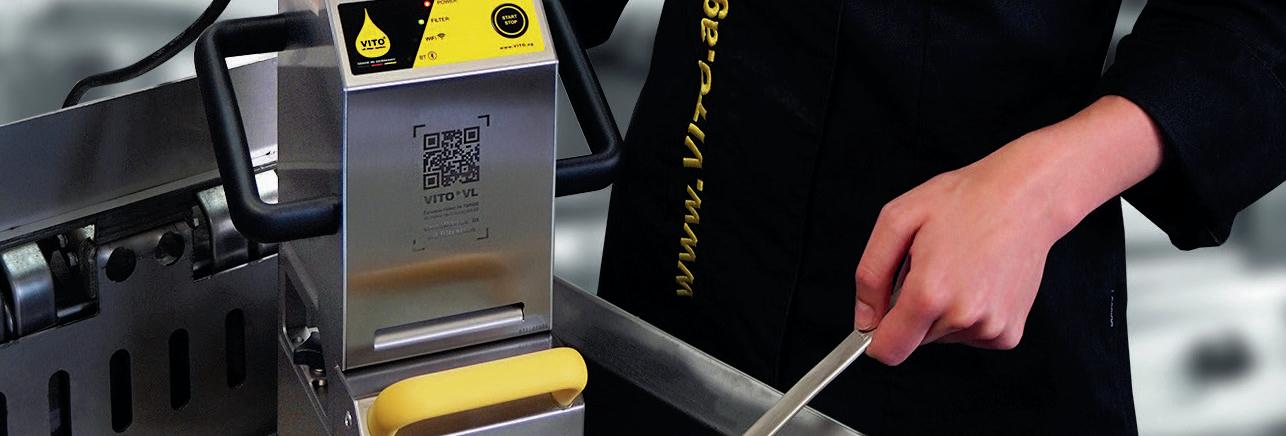












FRANCHISE FORWARD / CONTINUED FROM PAGE 26
his business footprint, he does not deny how valuable universities are for Primo Partners.
“Universities are incubators, and we love it for where we start businesses,” McBroom comments. “We love having a campus presence because that’s where so much energy happens, as far as talent recruitment and development.”
Moving forward into 2023, Primo Partners remains focused on two things: impact and celebration. McBroom explains that as a brand, the company is embracing a season of rejoicing and taking every opportunity to go back to the drawing board.


“We are re-sharpening our pencils and getting clearer on what our next 15 years will look like. The key word is impact; we want to dial it up and measure it in a robust way,” McBroom says. “We want to measure how we impact the lives of the folks in our company as well as the communities that we serve and the other businesses that we’re able to help.”
In 2021, sales were up by 104 percent at Ben & Jerry’s locations. In 2022, sales jumped by 77 percent. McBroom hopes to continue these trends and grow the franchise.
With its 15-year, 15-unit milestone met, Primo Partners developed a plan to open 25 Ben & Jerry’s shops within the next three years. Additionally, Primo Partners has a community impact strategy planned at $250,000 per year.
By 2033, the partners expect to have three best-in-category brands under their belt and a full-time social fund platform. McBroom envisions a nine-figure company, with real estate and stock ownership fused into the business model to bridge the generational wealth gap.
The long-term goal of Primo Partners is to generate $10 billion for Black business excellence through varied business and community initiatives. McBroom wants to take every opportunity to continue providing mentorship and education in every area the brand touches.
“As a business, we always have an opportunity,” McBroom says. “I come from an abundance mindset, not a scarcity mindset. There is always an abundance of opportunities for growth in any business that we run.”
industry. It is here that I see increasing evidence of a more innovative approach to our business. The degree of innovation on display at the show has, in my opinion, increased in recent years. Chances have grown with each passing year that you will see something at the show that makes you say “wow.” This applies to the largest brands just as much as it does to the independent operator. Committing quality time to traverse every aisle can take the place of many days of scouring the world in search of ideas and partners. And of course, bring your appetite. You’ll have the chance to sample more food than you could ever imagine.
The agenda for the show increasingly leans into thought leadership, and anyone who doesn’t build the education sessions and various presentations into their agenda will not gain the full value that the show has to offer. A variety of industry events take place throughout the city; the energy of the show extends well outside of the convention space. I have many fond memories of events hosted by the National Restaurant Association, International Food Manufacturer’s Association (how can I ever forget receiving their Silver Plate Award?), trade publications such as QSR , and many suppliers to the industry. It is well worth your time to study the agenda in advance and plan your time accordingly.
The main reason I look forward to the show, however, is the opportunity to interact with my friends and peers. One of the most common questions among industry friends come the spring of each year is, “are you going to be in Chicago?” It is the place to connect.
If we have longed to see a friend from the industry, chances are, this is the time and place we are going to catch up.



I hope that this year’s show is the best and most attended ever. While there is much handwringing over the economic climate, this isn’t a time to retreat. I’m a big believer in our best days always being ahead of us; planning for the alternative is a self-fulfilling path to decline. If you are looking for an injection of optimism and inspiration, I know exactly where you will find it. See you in Chicago!




the motivation to honor the promise he made to his father pushed him to persevere.











His big break came in 2016 when the rapper, actress, and fellow Philadelphia native Eve visited the Dunwoody shop.
“She said that if the food was good, she’d put us up on her social media outlets,” Hayes recalls. “I made that chicken cheesesteak like my life depended on it. She went crazy for it, and the next thing I know, we were going viral.”
Business has been booming ever since. Not long after the brand went viral, lines began snaking around the gas station. It wasn’t uncommon to see hundreds of customers lined up for a taste of the renowned cheesesteaks.
By 2019, Big Dave’s had outgrown its humble origins. Hayes set out to expand the business into a multi-unit operation with two full-sized restaurants. He closed the original shop and opened a landmark location in downtown Atlanta, followed by a second location in Doraville, just a few miles away from the gas station that started it all. The expansion continued with a food truck, followed by the stadium units in 2022.
Ranked as one of the “Top 10 Best Sandwiches” in the world by World Food Champions, the restaurants are open for lunch and dinner and available for counter-service dine-in and takeout. They’re designed with the founder’s roots in mind. White subway tiles with red and blue accents line the walls, complemented by decor straight from The City of Brotherly Love.
“I keep that Philly vibe with Sixers and Eagles flyers around,” Hayes says. “I play Philly music. When you walk in, you really feel like you’re in Philly.”
The success of the downtown and Doraville stores sparked attention from operators interested in franchise opportunities, but when the pandemic hit, Hayes pulled back to focus on supporting the community that helped build his business. He donated thousands of free meals to customers, provided food and face masks to healthcare workers, and raised more than $200,000 to support Black-owned businesses in Atlanta.
The protests that erupted in the summer of 2020 following the police killings of George Floyd in Minneapolis and Ray-
shard Brooks in Atlanta presented another test for Big Dave’s. The windows at the downtown location were knocked out by vandals twice that summer. Hayes says the response from the community was overwhelming.
“The whole community tried to help me,” he says. “I even had celebrities wanting to donate money. I saw just how much people loved the brand, how much they wanted it to be there, and how they’d do anything to keep it there.”

Big Dave’s wasn’t immune from pandemic-driven disruption, but unlike many emerging restaurant brands, it came out of COVID stronger than ever. Hayes says the brand grew 100 percent year-over-year in 2020, and it’s continued to do so in the proceeding years.
The business recently doubled its brick-and-mortar footprint with two new restaurants in the Atlanta area, including a 1,500-square-foot store in Lawrenceville, Georgia, and a fourth store in Forest Park, Georgia.
It also is gearing up to expand beyond its home state. Hayes is targeting Charlotte, North Carolina, for the brand’s first location outside of Georgia.
He says he’ll start thinking about franchising when he’s closer to a double-digit store footprint.


His tentative plan is to launch his tenth store through a partnership with a franchisee.
“This brand is special, and it’s going to continue to grow, but I’m not in a rush,” he says. “My dream is to have Big Dave’s all over the nation.


“Whether that’s by franchising or with corporate-owned stores, it doesn’t matter. The way I get there is by keeping my boots on the ground.”
Reflecting on the brand’s success so far, and its potential for continued growth, Hayes says it all boils down to that promise he made to the original Big Dave.
“I just want to make my father proud by doing something the right way,” he says. “It’s bigger than food. I have amazing food, but I also have amazing passion. Over the years, people have been able to see that. They’ve gravitated toward the brand because they want me to win.”



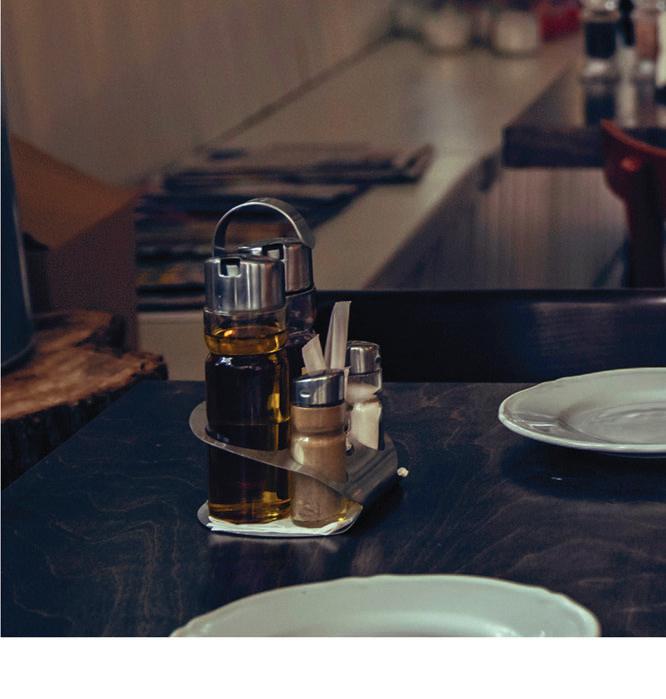

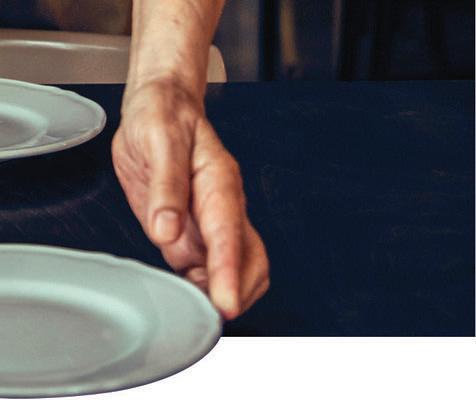





What was your first job?
My first job was scraping cheese off of pizza pans and washing dishes in a three-compartment sink in the back of a Pizza Hut. This is when the dough was made in house, sheeted, and cooked in a deck oven. The restaurant had a juke box, so we would turn the music up after closing. I was 12 years old and my family knew the local franchisee.
What’s your favorite menu item at Chick N Max? Oh, that’s a tough one. I still stand in front of our menu board and struggle with my decision. Our Sweet and Spicy sandwich is unique because of the raw cucumber which gives the heat an offset with its cool crunch.
What’s your favorite cuisine aside from chicken and wings? I love home cooked Mexican food! My favorite place to get it has been open since 1953 and is still owned and run by the same family.
Who inspires you as a leader? People. Often times, people within the industry get labeled as mere burger flippers. That couldn’t be further from the truth. We’re restaurant professionals who are serving and creating hospitality. But if I had to choose one person, it would be George McKerrow, founder of LongHorn and CEO of Ted’s Montana Grill.
What’s the best piece of advice that other restaurant executives should hear? We achieve results by and through our people. Select, hire, and train people, and develop a culture people take home with them.
In the early 2000s—after having already spent 23 years in real estate and development for such brands as Lone Star Steakhouse and Salon, Freddy’s, Smashburger, and Ted’s Montana Grill—I began mulling over the idea of a franchise concept that would accommodate the ever-growing movement toward red meat alternatives. I had worked with burgers, seafood, pizza, and steak, but to me, none had shown potential like the explosion of the chicken segment. So, it was time to create a legacy brand that would be here a long time; to create a niche that created a healthy platform that others didn’t offer.

I began experimenting with a big smoker in my backyard in Wichita, Kansas, using various barbecue flavors such as hickory and mesquite. It didn’t take long for me to realize that a franchise serving almond smoked chicken as a heathy alternative would be a big part of the concept I was envisioning. With that knowledge, I conceptualized Chick N Max in 2017 and assembled a team of culinary professionals to perfect the menu. The
first store opened in 2018, and the brand has since grown to three units across Wichita.
Today, Chick N Max offers a unique culinary experience with 10 flavors of chef-crafted sandwiches, made with almond wood smoked pulled chicken or crispy golden fried tenders. Examples include the Maple Bacon Sandwich, featuring pulled smoked chicken, chopped bacon, a drizzle of maple syrup, cheddar cheese, and mayonnaise on a potato bun. In addition, we serve our signature almond wood smoked chicken in the form of wings, leg quarters, breast quarters, and half chicken.
Most recently, we announced a momentous 2022, our first full year of franchising, highlighted by three new franchise development deals that will expand our next generation fast casual chicken franchise concept in Kansas, South Dakota, and Texas. The deals will introduce 53 new restaurants to these markets, including 25 across the state of Kansas, three in Sioux Falls, and 25 throughout the Houston metro area.
THE ISSUE: Safe fryer oil disposal.

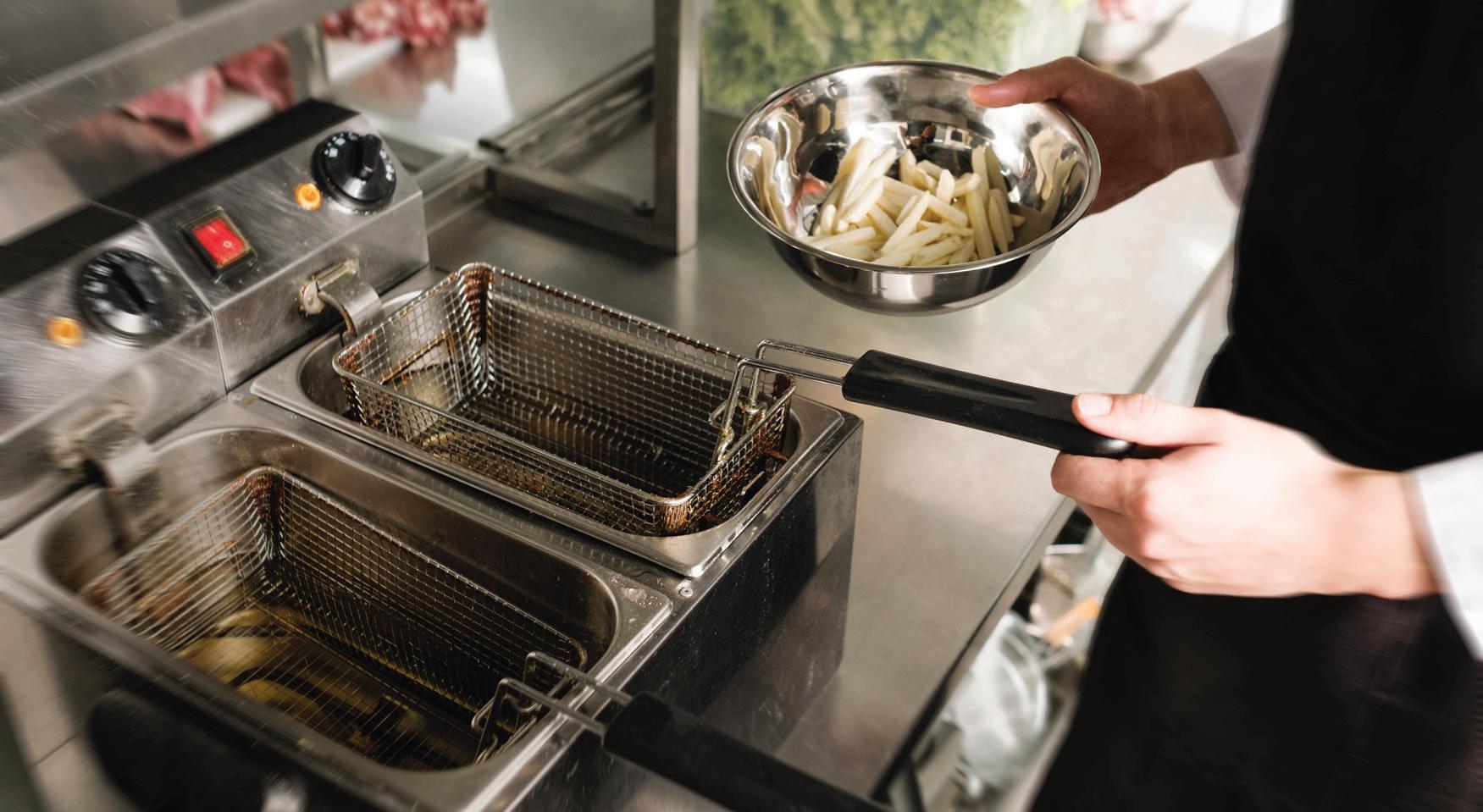
THE SOLUTION: The Shortening Shuttles® allow you to safely and easily pump out the hot oil into the dumpster.

THE ISSUE: Limited space for necessary equipment.
THE SOLUTION: Small footprint of Shortening Shuttles®

Generous capacity ranging from 5.5 to 12.5 gallons.
THE ISSUE : Quality. There is so much junk out there folks are reluctant to buy ‘more junk.’
THE SOLUTION: 30+ experienced industry provider of PROVEN quality equipment.
The shift to off-premises for ‘ready to eat’ food isn’t going away—comfort food is here to stay.
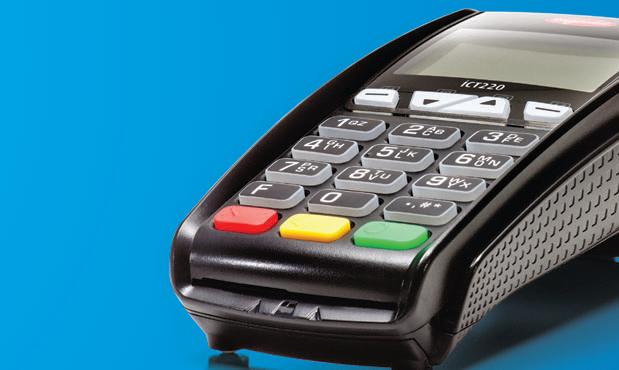



































The last couple of years have been a roller coaster for the franchising industry as a whole, even for brands that don’t necessarily fit within the quick-service restaurant space. As consumers gradually returned to dining out and enjoying more time away from home, brands have also had to contend with supply chain issues and chronic labor shortages throughout the hospitality industry.





Monin’s exciting new flavors bring a kick of heat and subtle sweetness.
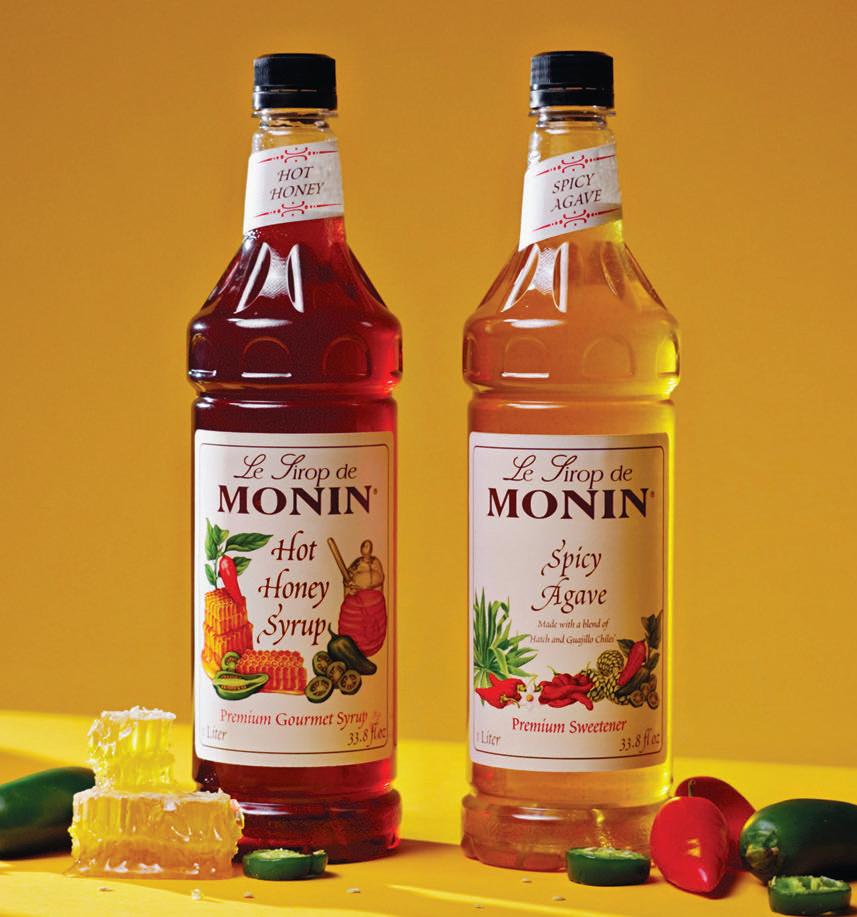
From spicy margaritas and hot honey ciders to fivespice salmon, food and beverage menus across the U.S. are heating up. With its latest flavors, Hot Honey Syrup and Spicy Agave Sweetener, Monin plays with the concept of sweet and spicy in distinctly di erent ways.
Hot Honey Syrup was named Monin’s 2023 Flavor of the Year a er a rigorous process of collecting and analyzing emerging trends, consumer insights, and industry data to determine the flavors that will trend throughout the coming year and beyond. Research from Datassential shows hot honey’s on-menu growth is projected to outpace nearly all other culinary and beverage flavors over the next four years. Hot Honey Syrup pairs organic wildflower honey and zesty jalapeño for a well-balanced flavor that turns up the heat on beverage and culinary creations.
“Hot Honey is full of familiarity and warmth, and it allows people to take part in the spice trend without being overwhelmed by heat,” says Stasha Johnston, senior vice president of marketing at Monin. “People are craving spice and simple joys that deliver an element of surprise to create a delightful experience.”
Hot Honey Syrup adds dimension to teas, lemonades, sauces, marinades, and a variety of culinary creations. And, unlike traditional honey, it’s the perfect consistency to blend into iced or frozen beverages. Monin’s proprietary research found 70 percent of consumers who like spicy food indicated they’d like to try hot honey-flavored foods and beverages, signifying an opportunity for increased sales of products featuring a hot honey flavor profile.
Similarly, Monin found nearly two out of three consumers would be likely to try the new Spicy Agave Sweetener in a cocktail or mocktail at their favorite bar or restaurant. With Spicy Agave, Monin is the first in the industry to bring a sweet heat flavored sweetener like this to market. Infusing organic agave with a unique blend of hatch and guajillo chile peppers creates a craveable kick of heat that elevates margaritas, ranch waters, frozen drinks, iced teas, and more. Given significant consumer interest in tequila-based beverages, this
spicy sweetener allows operators to create on-trend cocktails and low or no ABV beverages easily and consistently.
“We anticipate our twist on the classic agave sweetener will be adopted by operators looking for a way to add elevated sweet and spicy beverages to their menus,” says Brian Loukmas, vice president of innovation at Monin. “Spicy Agave creates a memorable experience for guests and builds on the ever-growing popularity of the ‘swicy’ (sweet and spicy) movement. is new sweetener is also clean label, delivering on Monin’s promise to o er premium and authentic flavors made with the highest-quality natural ingredients.”
As consumers trend toward wellness, spice, and elevated experiences, these versatile new products from Monin will help operators to di erentiate their menu o erings, adding the perfect combination of sweet and heat to entice customers’ taste buds and appeal for those looking for be er-for-you food and beverage options. ◗
To learn more, visit monin.com .







pallet for each storefront makes sense. Since automation saves on labor and eliminates picking errors, it will also increase profits, too.
Given the ever-increasing array of brands and beverage flavors that cater to consumer preferences today, ge ing the right product mix to the customer at the right time is ge ing more and more difficult. is is especially true in manual applications that were originally set up to handle the more traditional fulfillment types, like full pallet and layer quantities. is is where automating an expensive process such as building a mixed SKU order pallet and leveraging a warehouse management so ware (wms) or warehouse control system (wcs) solution to pull the right product and build the right pallet in the right order comes into play. is saves on labor, operational costs, and helps to boost bo om-line profits.
For distribution of beverages, a pallet full of soda can easily be picked and shipped. While this may be true for one or two brands or flavors, this certainly isn’t the case when adding in water, raspberry lemonade, Frappuccinos, and more. ings quickly start to go awry when figuring out the correct mix and sequencing for these complex orders. is is when using automation to help build the perfect
An automated case picking system can be integrated with a highbay warehouse system or can be leveraged as a complete standalone solution. Cases of each SKU are depalletized and loaded into a robotic shu le system. e so ware knows which product is needed for the customer order and will retrieve cases from the shu le system for palletizing. Each case is then picked and palletized robotically. It does this case by case and uses a sophisticated palletization so ware to build the perfect pallet. It only must know the dimensions, weights, and whether, when, or where to place the exact products on the pallet. It can even handle sensitive products such as glass bottles. Product is also optimized to get the most on each pallet to increase the cube utilization within a trailer. is intelligent solution enables a faster way to build pallets, but it also enables a route sequencing order for distribution.
For distribution routes that are mapped out via distance, traffic routes, and more, the so ware understands which pallet should be built first so that it is loaded onto the truck for distribution first, second, last, and so on. is helps speed up distribution delivery. e same can also work with any chilled or frozen goods as well depending on the type of truck. ◗
To learn more, visit ssi-schaefer.com .
Since automation saves on labor and eliminates picking errors, it will also increase profits, too.
Restaurant beverage product orders can be complex, but automation can help manage mixed-product pallets while increasing profits and reducing picking errors.

When the pandemic hit, beverage sales plummeted. With restaurants relying on o -premises sales, not all consumers were adding beverages to their orders the way they had done pre-pandemic. With more diners returning to restaurants in 2021 and 2022, beverage sales have returned for the most part—especially when restaurants o er something that isn’t easily made at home.
Still, operators face a considerable number of challenges in today’s environment, such as inflation and continued labor concerns. As consumers are increasingly turning to foodservice for specialty beverages, operators have bolstered their operations. By introducing automation into their co ee programs, restaurants are o ering consumers consistent, top-quality co ee that would be challenging to make at home—all while improving speed of service and cleanliness.
Speed of service has always been important to consumers, but during the past few years the stakes have risen—especially as operators see sustained tra c at the drive-thru window. According to the 2022 Drive ru Report by Intouch Insight, “Technology and innovation have turned [quick-service] drive thrus into something hardly recognizable, and it has become the industry’s most innovative arena… Customers continue to prefer drive thrus when interacting with brands.”
e new Curtis Genesis Skyline was designed with operational e ciency in mind—especially applicable in the drive thru. is new machine brews fresh co ee from whole beans and is the first of its kind. e Curtis Genesis Skyline has the ability to automate co ee output based on demand. Maximum speed can serve customers quickly and e ciently—allowing operators to serve

the freshest co ee at top speeds. Not only can restaurants improve speed of service, but they also no longer have to worry about whether staff has cleaned the machine, thanks to fully automated cleaning daily via calendar programming.
With growing competition when it comes to co ee, inconsistency from day-to-day can cause consumers to look around and grab their co ee elsewhere. One problem operators face is drinks are made di erently from barista-to-barista, or sta forgets to make a new batch of co ee and ends up serving customers out of a stale batch.
When operators introduce automation, consistency is guaranteed whether equipment is set to sta -operated or self-serve configuration. Consumers appreciate knowing exactly what they will receive day-to-day: a top-quality co ee, ground fresh from whole beans. This type of quality and precision builds customer loyalty.
While introducing automated co ee equipment will certainly improve a co ee program, it takes more than equipment to take co ee programs to the next level—it requires the right partner.
SEB Professional is three brands in one company—WMF, Schaerer, and Curtis. is allows SEB Professional to be a partner who has the resources and knowledge an operator needs to create a custom, on-demand co ee experience for their customers—no ma er the size of an operation. ◗
With the simple push of a button, operators can provide consistent, delicious coffee.
With growing competition across foodservice, operators need new technologies that increase coffee quality and also eliminate operational pain points.

The first machine of its kind, the Curtis Genesis Skyline automates coffee output based on demand so restaurants serve the correct amount of coffee during every daypart.

Fresh Coffee.
Maximum Speed.
Reduced Labor.
Minimized Waste.
Operational Efficiency.
Automated Cleaning.
FIND OUT MORE BY VISITING US AT THE NRA SHOW: BOOTH #4438
because they are doing good. By simply using one straw over another, without sacrificing the user experience, they avoid contributing to our plastic waste crisis. And when consumers do good, they want to make sure others know about it. ey will tell friends, be an advocate for the product and restaurant, post on social media, and, of course, make more frequent purchases. So, if a business addresses the problem by making sustainability easy and even enjoyable when others do not, consumers will remember. It truly can be a mechanism that drives top-line growth.
So, how do restaurants make consumers aware of their actions promoting sustainability? In the absence of on-package branding, businesses can spread awareness through public relations e orts, on the establishment’s website, in on-location materials, or, more implicitly, by using recognizable products, like phade’s trademark blue straws. Customers can do good and feel good by essentially doing nothing but sipping their drinks through phade straws.
In a world confronting a critical climate crisis, the public increasingly expects that businesses do their part to improve environmental and social wellbeing. e restaurant industry specifically has been working to incorporate sustainable packaging and single-use products. Today, those e orts have reached a new level of urgency. Fortunately, real sustainability no longer means sacrifice, either in terms of cost or consumer experience. In the case of petroleum plastic alternatives, technology has created a “best of both worlds” opportunity with materials like PHA—a bioplastic derived from the fermentation of canola oil and indistinguishable from a traditional plastic straw. PHA is certified marine biodegradable (90 percent in 98 days), certified home and industrial compostable, and made in the USA.
Restaurants that replace their traditional plastic straws with PHA-based phade straws, for example, make consumers feel good

In contrast, businesses that pursue sustainability with an inferior product will generate a negative sentiment. For example, if a straw leaves paper bits floating in an expensive cocktail, a large consumer segment will not care whether or not that product caused environmental harm. ey will remember that experience and the business connected to it.
Consumers know there is a dire plastic pollution problem, and they want to help, but they don’t necessarily know how. Instead of pu ing them in a situation where they feel cornered to use a product that is unpleasant or harms the environment, they want businesses to provide the solutions for them. And restaurants can.
e promise of PHA o ers an honest, viable replacement for traditional plastic. With the stakes higher than ever when it comes to our planet’s future, businesses that tap into PHA alternatives will be on the front edge of sustainable innovation.
Further, phade presents an opportunity to seize market share by aligning with customer values in a simple and enjoyable way. And when consumers feel good about their experience and about where they spend their money, restaurants create more loyal customers and grow their revenue. ◗
To learn more, visit phadeproducts.com .
Restaurants that offer consumers a viable replacement for single-use plastics gain market share



Unlike traditional paper cups, which are lined with harmful, unrecyclable plastics, phade® paper hot cups are coated with PHA. It’s the same natural biopolymer we use to create our straws and stirrers and what allows our cups to be safely composted after use.



Supply chain disruptions and cost increases have impacted nearly every industry over the last few years, and bulk CO2 for food and beverage services is no exception. Further, demand for CO2 has accelerated via new applications like indoor agriculture and swimming pool pH balancing, while supply has diminished because of high natural gas prices impacting ethanol and CO2 production.
These forces have driven average CO2 prices up nearly 50 percent in just three years, and, at the local scale, supply shortages and price volatility have become common. The impact of these challenges is amplified for smaller scale CO2 users who are often in the worst position to secure good pricing and sufficient
supply. Even a restaurant with more than 25 locations is unlikely to have meaningful bargaining power with an industrial gas supplier, and the result is o en bad contracts, high costs, and poor service. Industries with heavy CO2 usage, along with many nationwide chains, have cut total CO2 costs by 25–50 percent and improved uptime by using their own equipment and independent CO2 suppliers.
Nacey Group exists entirely to bring those same strategies to small and medium sized food and beverage businesses of about five–25 locations to optimize the cost, availability, and ease of sourcing CO2.

Nacey Group o ers independent equipment supply and strategic gas sourcing. Restaurants can take control of equipment through competitive leasing and purchasing options. Available lease options will minimize monthly fees, and lease-to-purchase or purchasing outright will minimize the total cost of long-term ownership (more than 10 years). Nacey Group covers the costs of maintenance for all leasing options.
Once a restaurant has taken control of its equipment, the Nacey Group’s market insights and experience can be leveraged to negotiate gas sourcing. End-toend vendor selection and contract negotiation services help restaurants get flexible terms unique to their needs. Relationships with high quality local suppliers ensure great service and response times.
John Green, owner of High Park Tap House in California says, “We began leasing our equipment eight years ago from Nacey Group, and it wasn’t until last year that we encountered mechanical issues. Nacey Group responded immediately to get us back up and running, and they picked up the entire bill as promised when it was purchased. Like all equipment, it finally gave out, and we re-leased new equipment from them. We have used Nacey Group for both our N2 generator and CO2 storage tank, and pricing was lower compared to other distributors we have used in our 23 years of business. eir services have allowed us to control our costs through a stronger negotiation position with our vendors.”














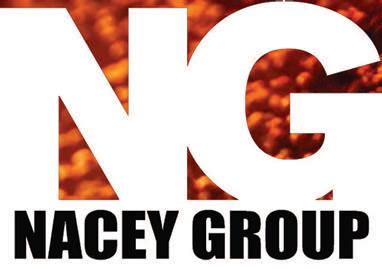

A partnership with Vitamix Commercial has been vital to consistency and speed.
It may be easier to find labor in 2023, but challenges around turnover and training have continued, which can compromise beverage consistency and brand loyalty.
Dallas-based Smoothie King Franchises Inc., a leading contender in the smoothie bar category, has a tried-and-true remedy for that. Even during the pandemic, the brand recorded double-digit growth, opening 263 new stores in 2020 and 109 in 2021.

For Smoothie King, beverage consistency, speed of service, and the overall customer experience are all tied closely to its choice of commercial blender, e Quiet One® by Vitamix Commercial. Each Smoothie King location operates multiple Vitamix® blenders powering through tough ingredients, back-to-back, to prepare up to 200 smoothies per day.
Back in the 1990s, when smoothies were rapidly gaining in popularity and Smoothie King was establishing itself as a leading chain restaurant, Vitamix was one of the few suppliers able to deliver blending equipment that could meet the high-performance characteristics the restaurant required.
When Vitamix introduced e Quiet One in 2010, Smoothie King embraced the blender as a new standard for power, speed of service, consistency, and reliability.
Today, each of e Quiet One blenders that Vitamix manufactures for Smoothie King is outfi ed with custom programs optimized for Smoothie King’s blend profile, consistency, and texture. e programming also aids in speed of service, minimizes runtimes, and ensures e cient execution. Sta members just press one bu on on the front of the machine, and the programming handles the rest.
“So, if you go to a Smoothie King in Austin, Texas, and a Smoothie King in Miami, Florida, and you order the same smoothie, then you are going to get the same experience,” says Lisa Klein, vice president, global commercial and international household sales, Vitamix.
Smoothie King also values e Quiet One because it’s quiet—quiet enough that employees and customers can carry on a conversation while it runs. e blender’s sound enclosure seals with a twist-lock design that holds the enclosure in place. Rubber components between the upper and lower parts of the enclosure aid in the seal and dampen vibration. In addition, e Quiet One’s motor is suspended on a system of rubber grommets, further reducing sound.
“It’s important, especially when you have four–six blenders going simultaneously,” says Lori Primavera, vice president of research and development and product management at Smoothie King. “Without that technology, Smoothie King locations would be extremely noisy. For the store environment, you want to hear the blender—because it is a smoothie place—but you don’t want it to be so loud that you cannot have a conversation.”
e partnership between Smoothie King and Vitamix Commercial has been a winning formula for both brands. Smoothie King is now the largest smoothie brand in the world, with more than 1,300 locations, and Vitamix Commercial has a presence in 130 countries. ◗
To learn more, visit vitamix.com/us/en_us/commercial/ourdifference.
With custom programming, one-touch operation and precision performance, Vitamix® machines empower employees to achieve perfectly consistent results every time – even the first time.

It’s just one reason we’re the industry’s most trusted blending partner.
See what else sets us apart at VITAMIX.COM/OURDIFFERENCE
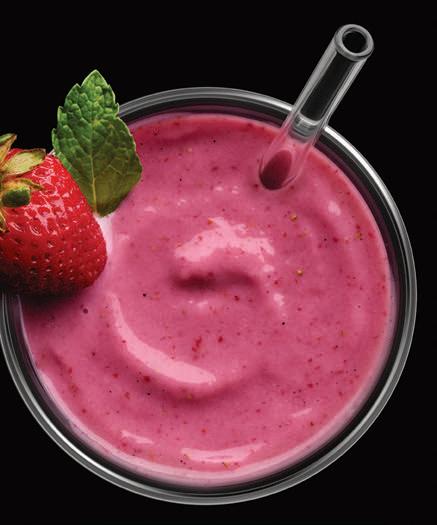



With summer fast approaching, nothing quenches thirst and satisfies cravings like a frozen treat. Frozen beverages are taking over the food and beverage industry, here is why they are a must at restaurant counters this year.

e continued rise of frozen beverage popularity comes from customers wanting convenient options when eating out, and icy treats are a popular choice. In addition to refreshing taste, their unique flavors will satisfy just about any craving. From slushies and milkshakes to smoothies or frozen cocktails, frozen beverages have something for everyone.
One reason for the popularity of frozen beverages is their incredible convenience. With the fast-paced lifestyle of today’s consumers, people are looking for quick, delicious, and refreshing on-the-go options. Frozen beverages are the perfect solution, providing a quick and easy way to satisfy thirst and cravings.
ere are many benefits of o ering frozen beverages, but, first and foremost, they can help increase sales and revenue. ey are a high-profit margin item with minimal ingredients and labor costs. By o ering a variety of flavors and sizes, restaurants can cater to different tastes and budgets, giving customers a wider selection. is can draw in new customers and increase sales of other items on the
Another benefit of o ering frozen beverages is versatility. ey can be tailored to meet the preferences of a diverse customer base. Whether a restaurant is catering to health-conscious consumers with low-sugar and calorie options or o ering indulgent drinks for those with a sweet tooth, frozen beverages can satisfy a diverse customer base.
Frozen beverages make a great addition to any menu—they o er an array of benefits that can help a ract new customers and build loyalty. eir convenience, flavors, and versatility will remain a popular choice for years to come.
For brands wondering what types of frozen beverages they can o er at their counters, there’s a variety of options to choose from, including slushies, frozen cocktails, smoothies, shakes, nitro,
multi-flavor, and frozen carbonated drinks. All of these are highly profitable but not always easy to make.
Restaurants can say goodbye to time-consuming, messy, and complicated processes for their employees when making frozen drinks. Frozen Beverage Dispensers’ (FBD) cu ing-edge equipment eliminates the need for daily disassembly and cleaning of units, which lets personnel direct their time and e ort to where managers need it most. Leveraging a closed-sealed system in conjunction with Bag-in-Box (BiB) technology, FBD machines can go a year without disassembly, making frozen treat programs simple, easy, and highly profitable. e most profitable franchises across the country choose to add frozen drinks to their operation.
With over 532 equipment configurations, FBD can find the perfect setup for any sized restaurant. With FBD’s support, restaurants can develop an implementation plan, including unit setup and maintenance, ensuring the success and profitability of frozen beverage programs.
Boasting lowest ownership costs and smallest counter space in the industry, FBD’s Frozen Program is perfect for operations of all shapes and sizes.
To learn more, visit fbdfrozen.com .
Profitable franchises serve frozen drinks easily with high profit margins and minimal maintenance.



























































For more information on these companies, visit www.QSRmagazine.com/connect/
Accurate Box Company ........................ 83 973-345-2000 | accuratebox.com
Acrelec ................................................39 877-334-9737 | acrelec.com/kiosk
American Express ................................93 877-569-5497 | creditcard.americanexpress.com
Anchor Packaging ................................. 7 anchorpac.com
ASSA ABLOY Entrance Systems .............. 4 704-221-2068 | assaabloyentrance.us
Cholula ................................................55 855-246-5852 McCormickForChefs.com/products/cholula
Coca-Cola Company ............................... 1 800-241-COKE | coca-colacompany.com









Creative Realities ...................Inside Back 888-323-3633 | Cri.com
Crow Works .........................................67 CROWWORKS.com/QSR
Dallas Group of America .......................85 800-367-4188 | magnesol.com
Ecolab ....................................Back Cover 800-529-5458 ecolab.com/solutions/machine-warewashing-qsr
Ferrero USA .......................................... 9 800-408-1505 ferrerofoodservice.com/us/en/butterfinger
FIFO Innovations ..................................87 800-453-3436 | fifobottle.com
Frymaster ............................................41 800-221-4583 | frymaster.com
Ghirardelli ............................Inside Front 800-877-9338 | ghirardelli.com
Global Display Solutions ......................71 go.gds.com/midas-aria | america@gds.com
Hatco Corporation ................................35 414-671-6350 | hatcocorp.com

HM Electronics ...............................22, 23 866-577-6721 | hme.com/nexeo
IHOP ..................................................... 2 ihop.com/en/about-ihop/franchise-opportunities/ franchise-request
Inline Plastics ......................................37 800-826-5567 | InlinePlastics.com/hot
InnoPak ...............................................91 800-INNOPAK | innopak.com
Intouch Insight .....................................65 800-263-2980 | Intouchinsight.com
Johnsonville Foodservice .....................27 800-837-5391 | Foodservice.Johnsonville.com
Lamb Weston .......................................13 800-766-7783 | go.lambweston.com/simplify
Loomis ...........................................28, 29 713-435-6700 | loomis.us
Mike’s Hot Honey .................................19 212-655-0574 | mikeshothoney.com/sample
Mother Parkers ....................................21 800-638-1884 | mother-parkers.com
MerryChef ............................................47 888-417-5462 | merrychef.com
McCormick Culinary .............................59 855-552-9797
McCormickForChefs.com/McCormick-Culinary
McCormick Cattlemen’s ........................49 855-552-9797
McCormickForChefs.com/Cattlemens
National Sign Systems ..........................33 614-850-2540 | nationalsignsystems.com
NorthAmerican Bancard .......................96 866-481-4604 | NYNAB.com
OneDine ..............................................38 888-551-3463 | onedine.com
PayiQ ..............................................14, 15 Pay-iQ.com
Red Gold ..............................................45 866-729-7187 | RedGoldFoodservice.com

























RF Technologies .........................5, 10, 112 800-598-2370 | rfdrivethru.com



Restaurant Technologies ......................51 888-796-4997 | rti-inc.com
Robot Coupe .......................................90 800-824-1646 | robot-coupe.com
Simplot ................................................73 208-780-8200 | simplotfoods.com
Steak n’ Shake......................................86 steaknshakefranchise.com/opportunity
Subway ................................................16 Subwayfranchise.com
Texas Pete ...........................................25 Texaspete.com
The Howard Company ..........................57 www.howardcompany.com/schedule-a-meeting-at-nra
Transact Technologies ..........................63 877-748-4222 | transact-tech.com/qsr-mag
Vito Fryfilter ........................................89 847-859-0398 | vitofryfilter.com
Worcester ............................................95 800-533-5711 | Shortening-Shuttle.com
BEVERAGE SOLUTIONS & EQUIPMENT ..............97-111
Frozen Beverage Dispensers ........110, 111 210-637-2800 | fbdfrozen.com
Monin Gourmet Flavorings ........... 98, 99 866-SYRUP-20 | monin.com
Phade Products .........................104, 105 phadeproducts.com
Schaefer Systems International ......100, 101 704-944-4500 | ssi-schaefer.com






SEB Professional .......................102, 103 800-421-6150 | wilburcurtis.com
The Nacey Group .......................106, 107 888-710-6223 | naceygroup.com
Vitamix .....................................108, 109 800-437-4654 | Vitamix.com/ourdifference
